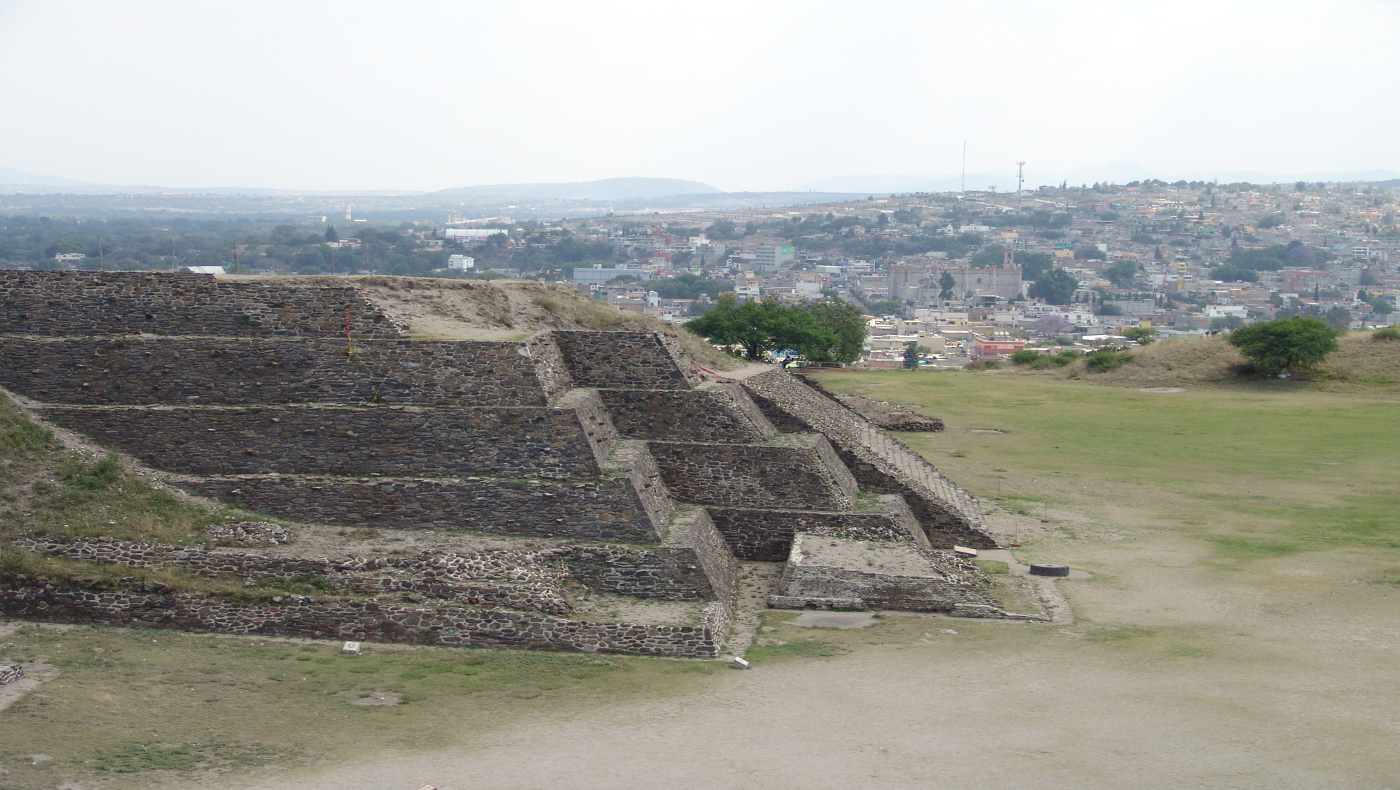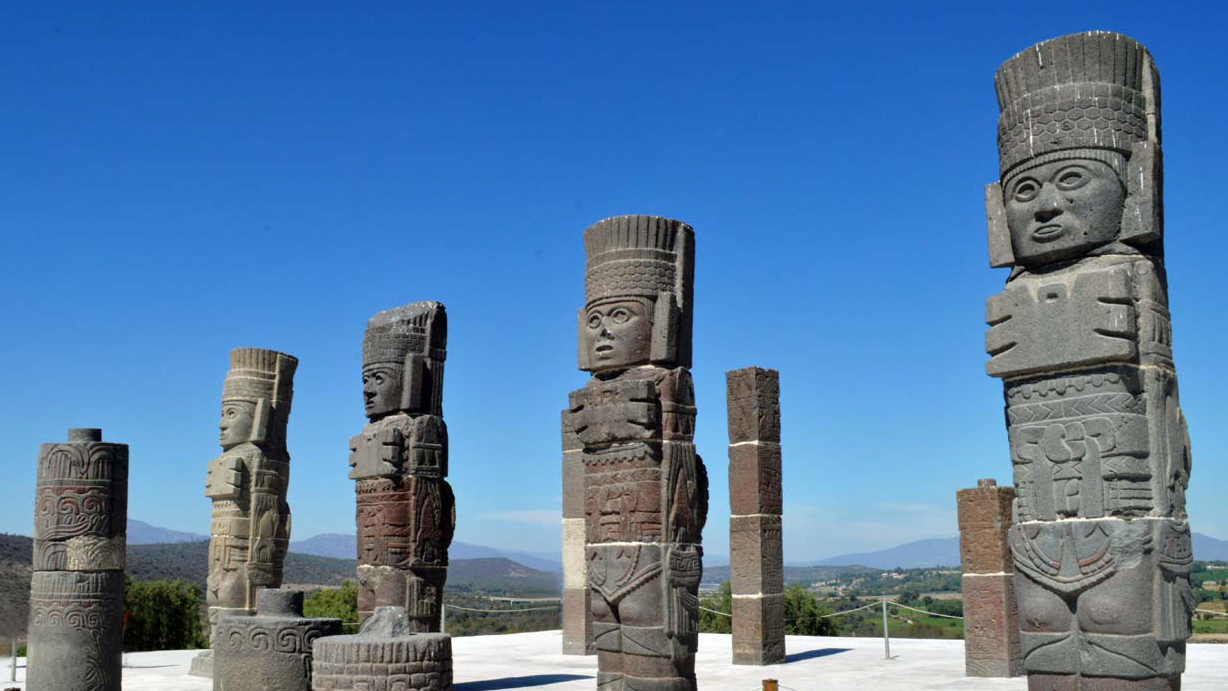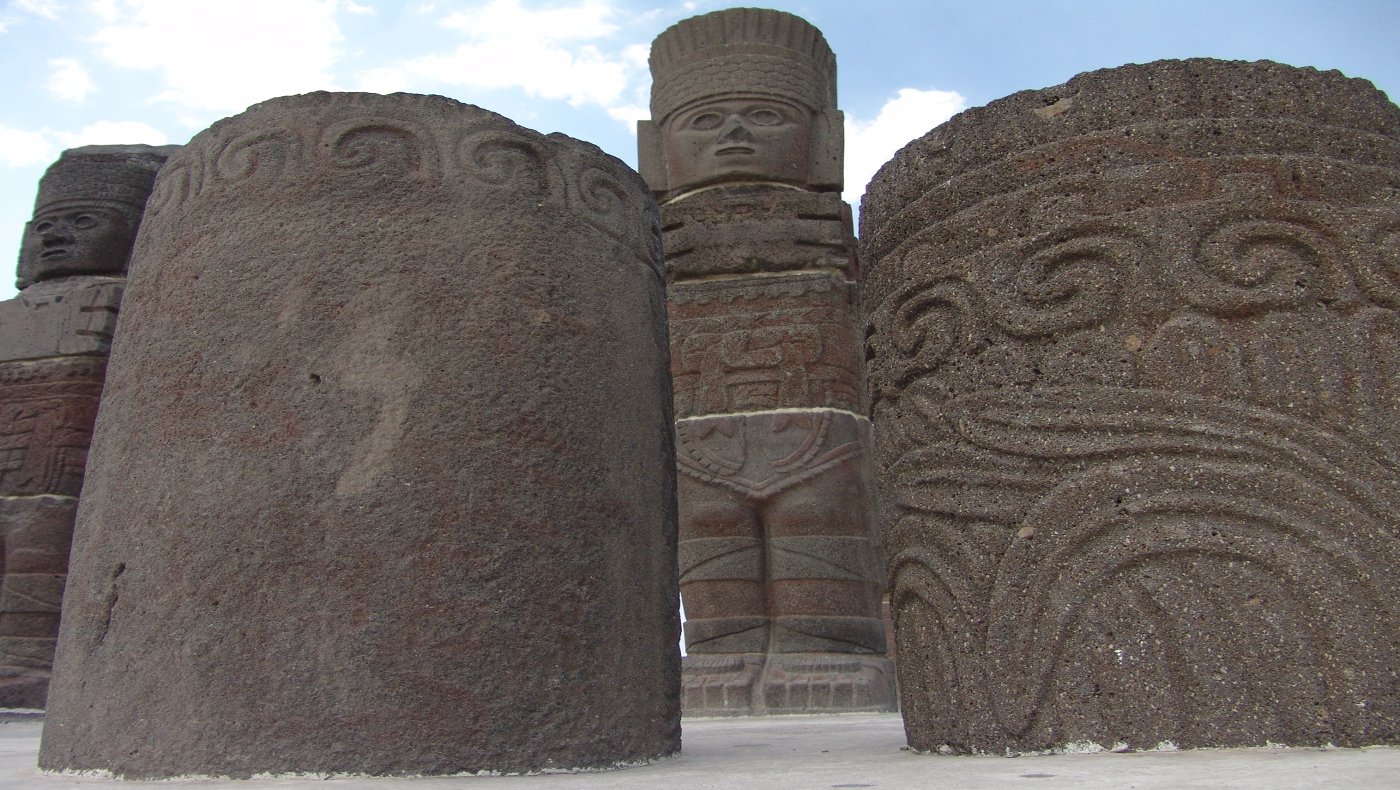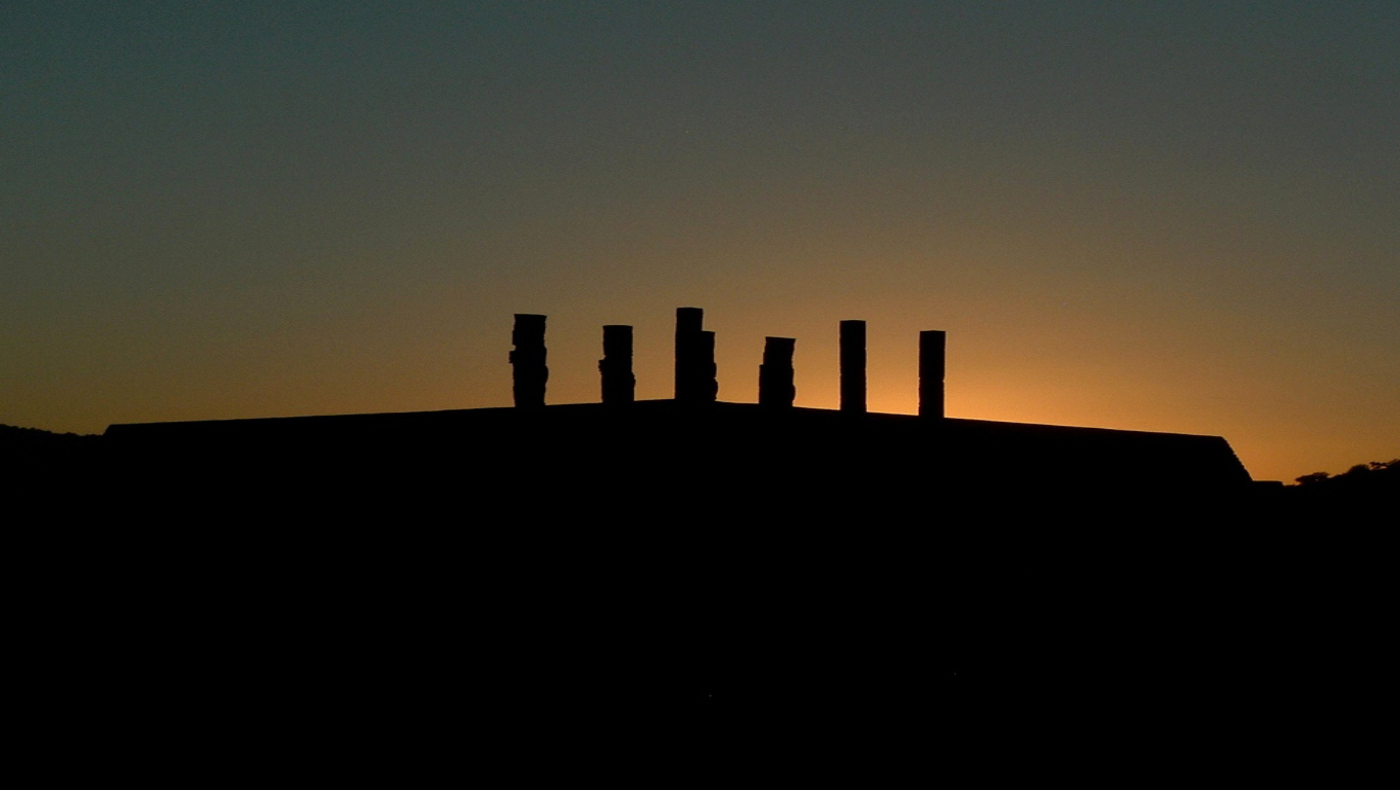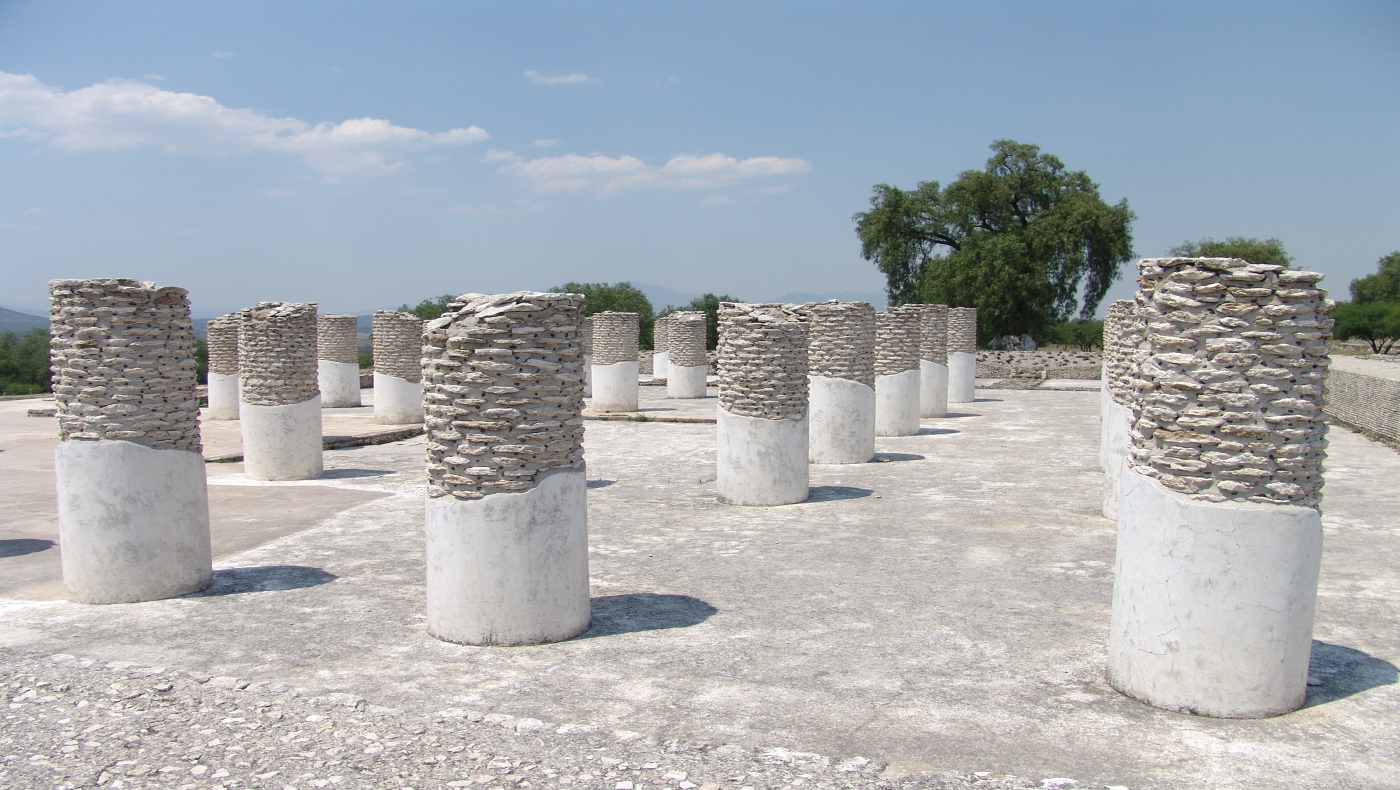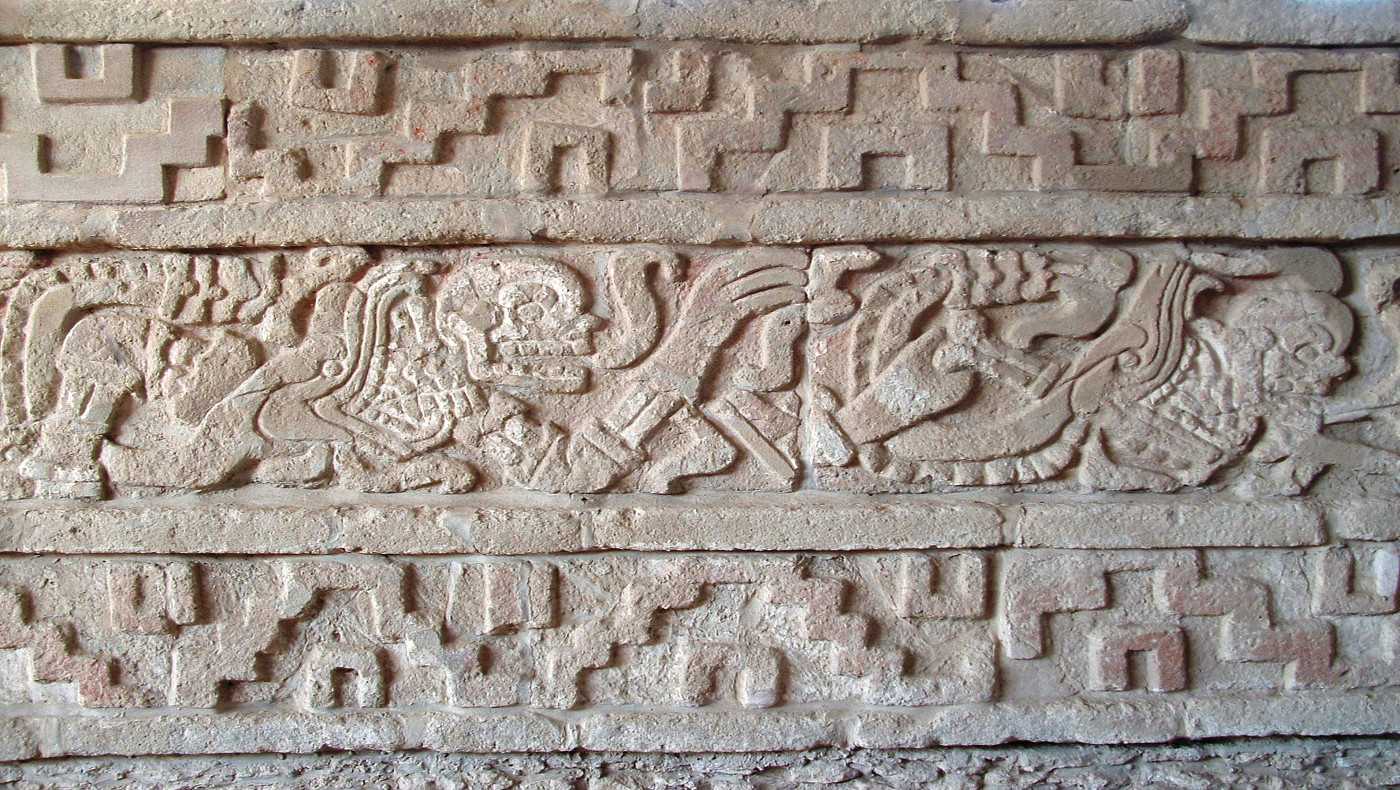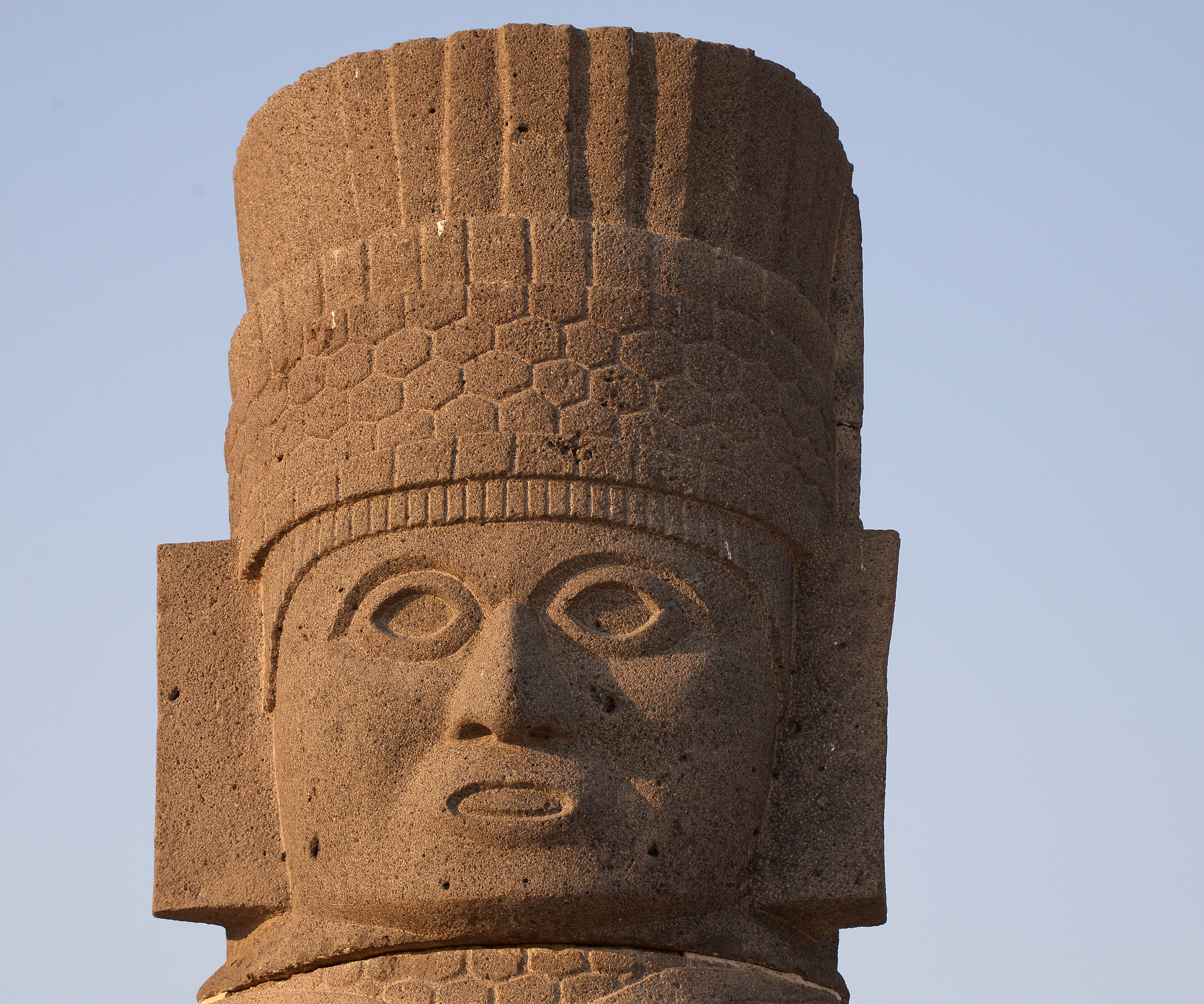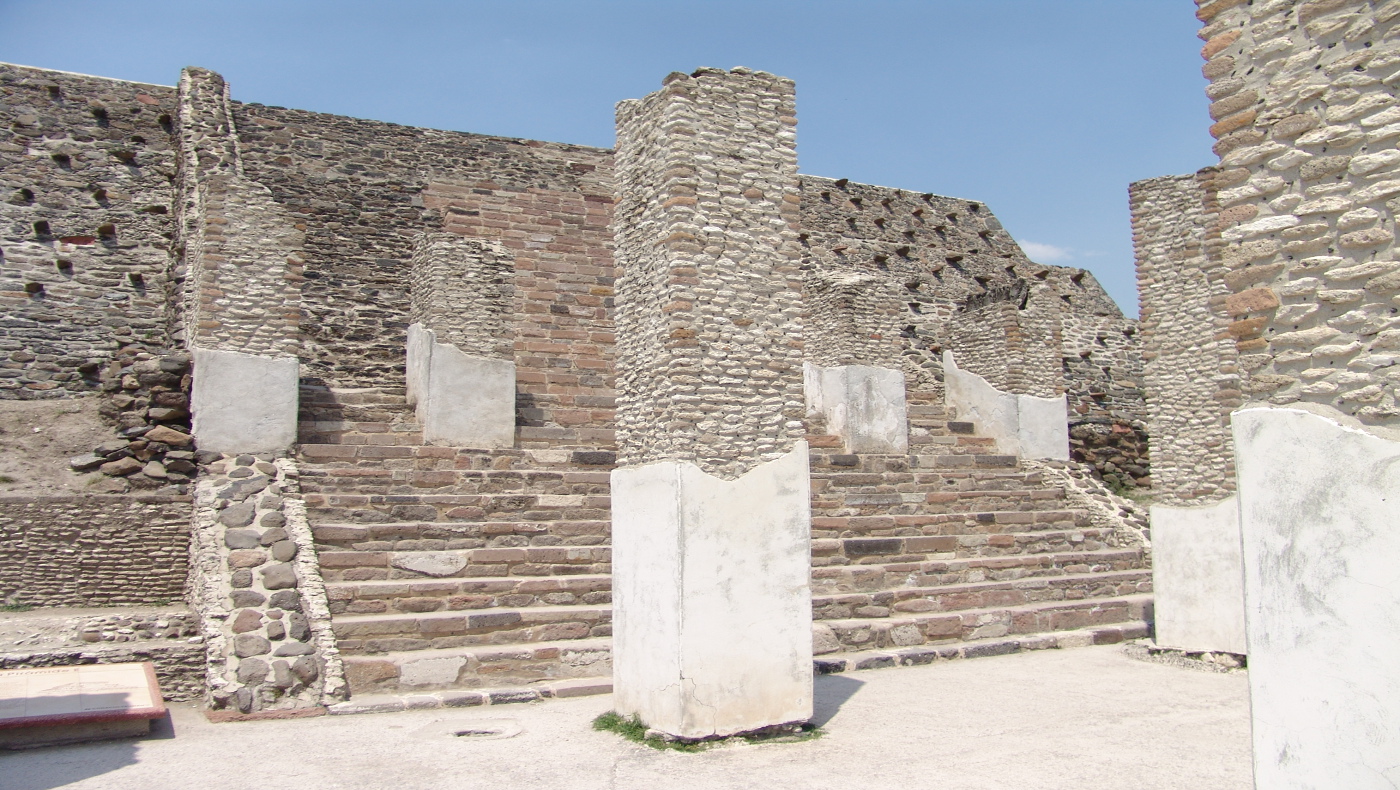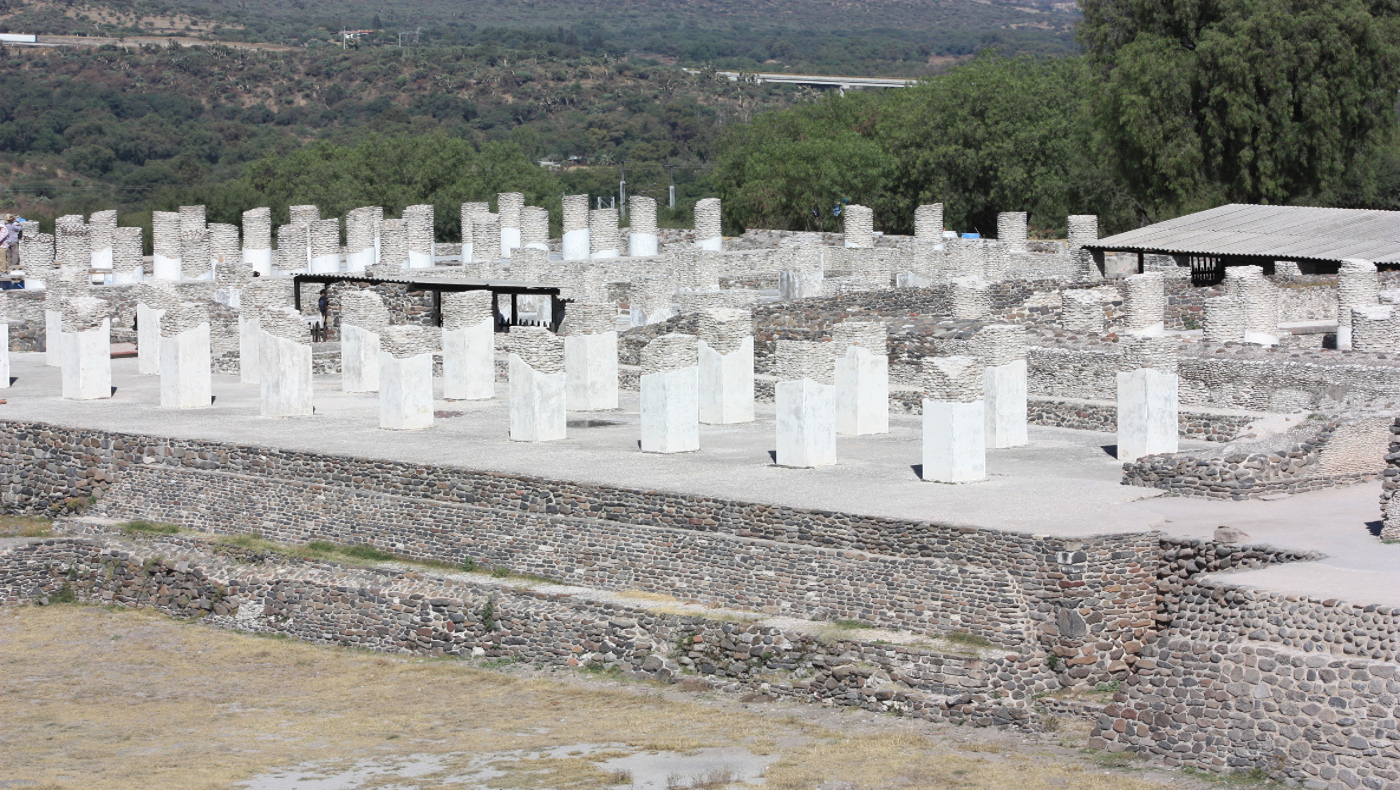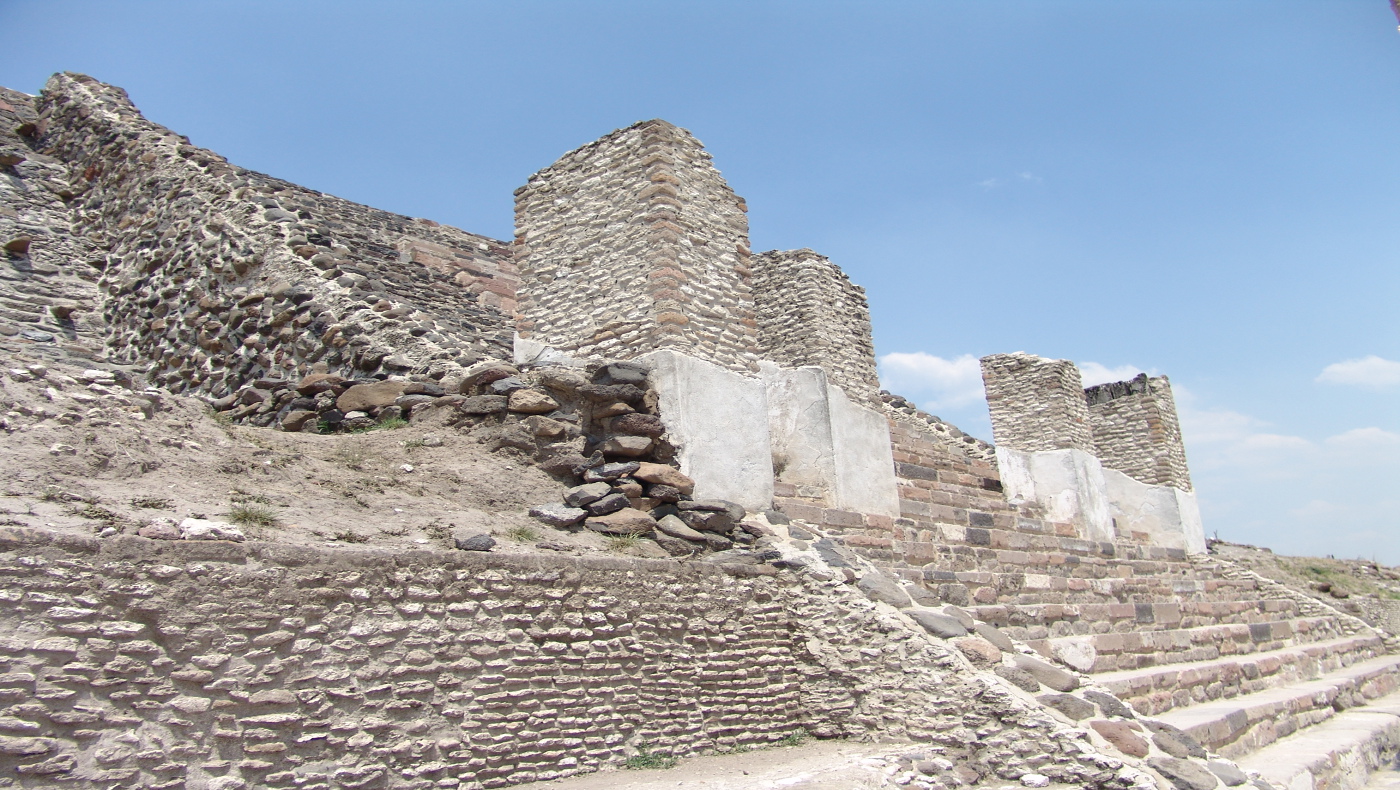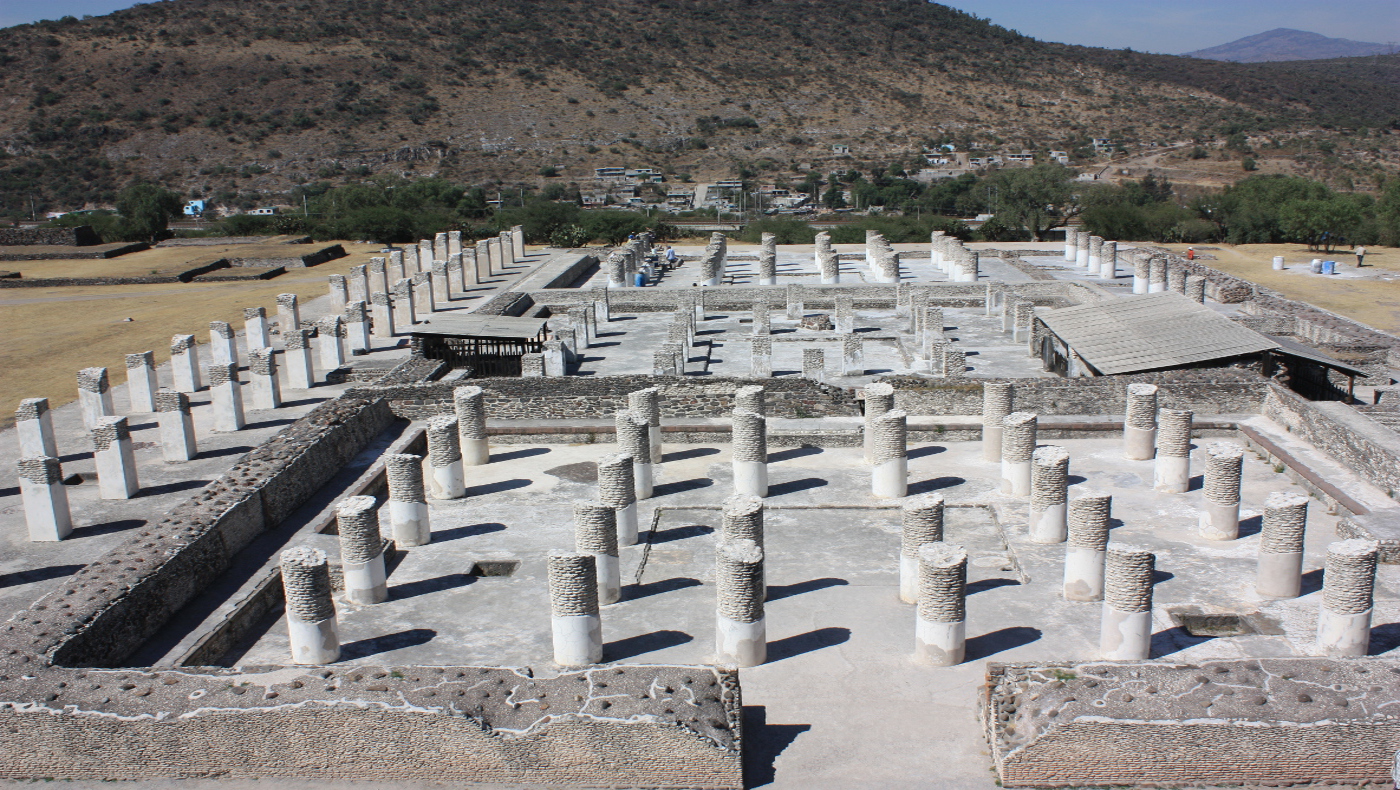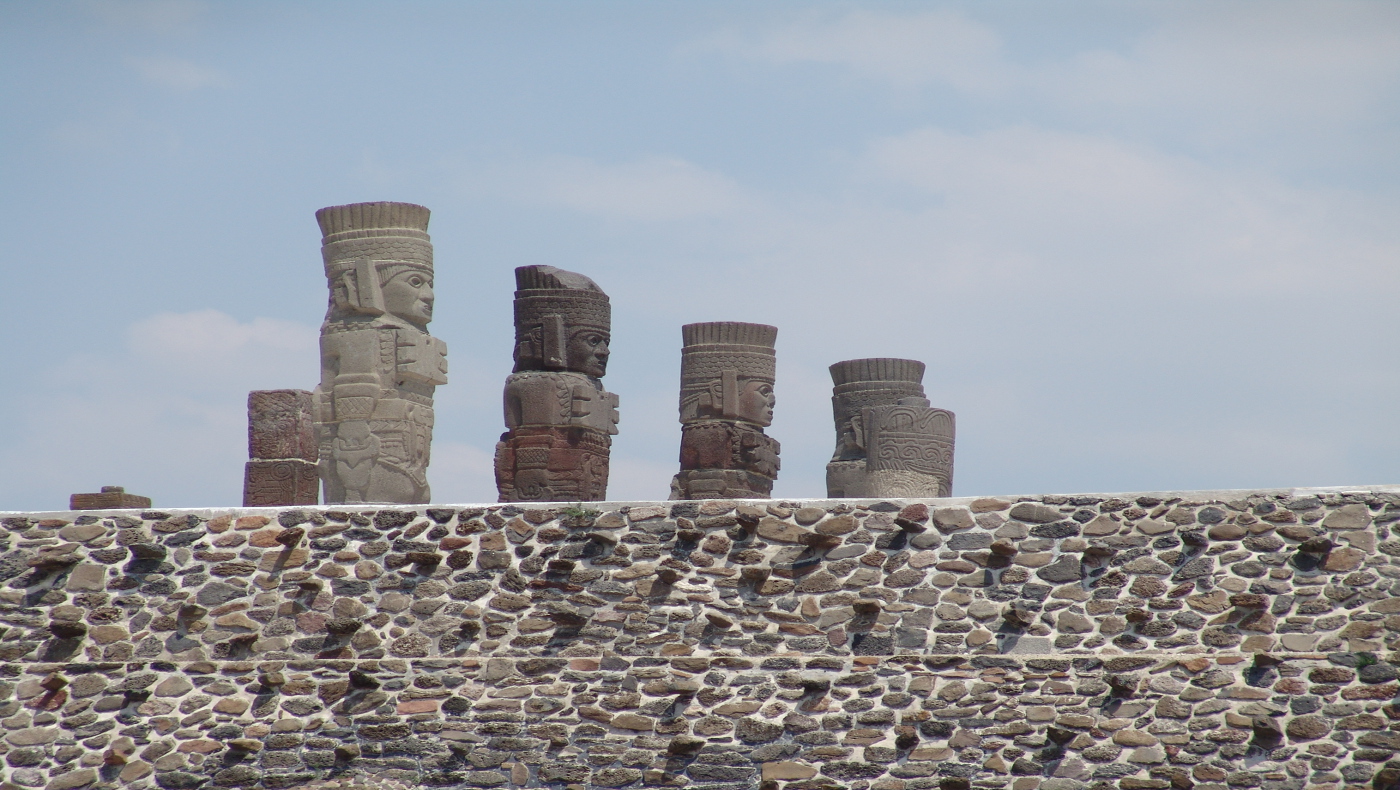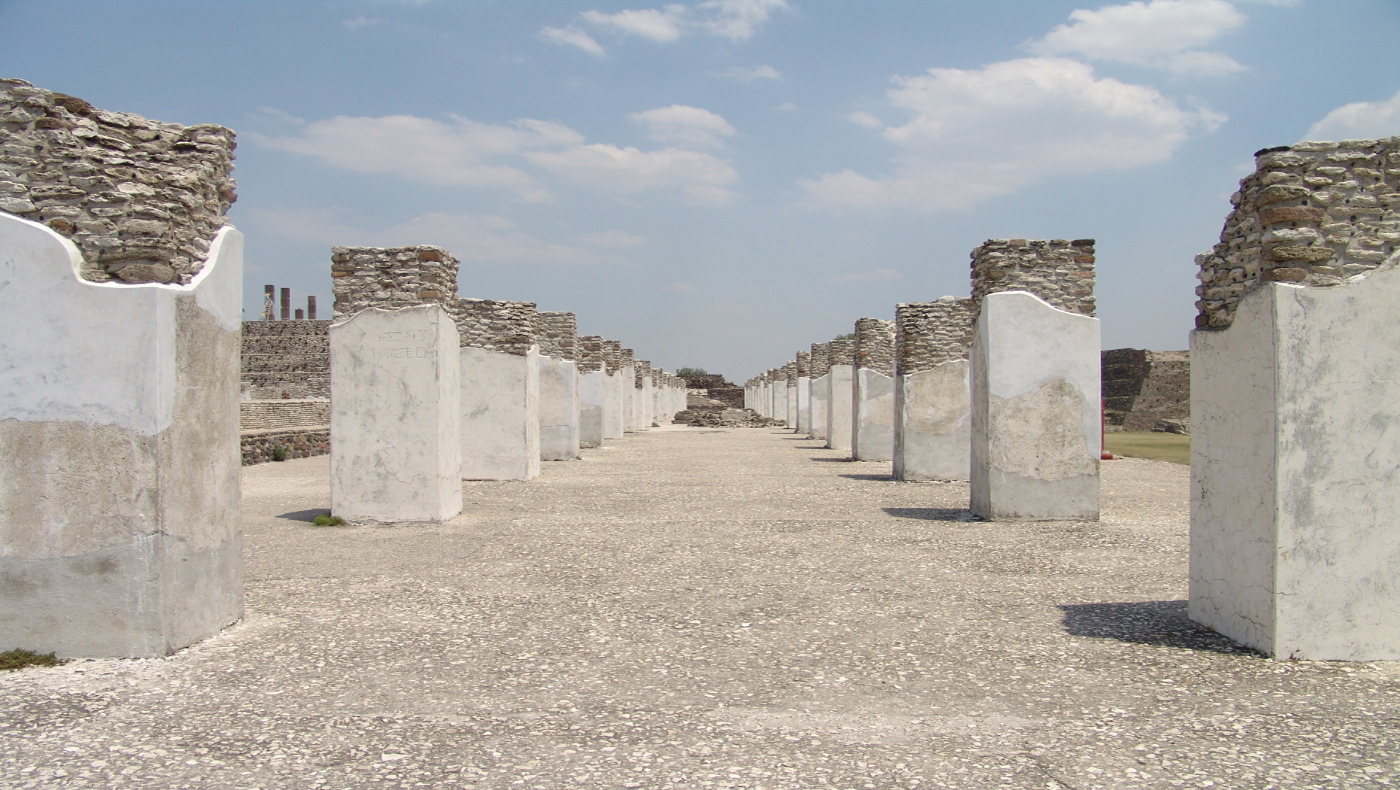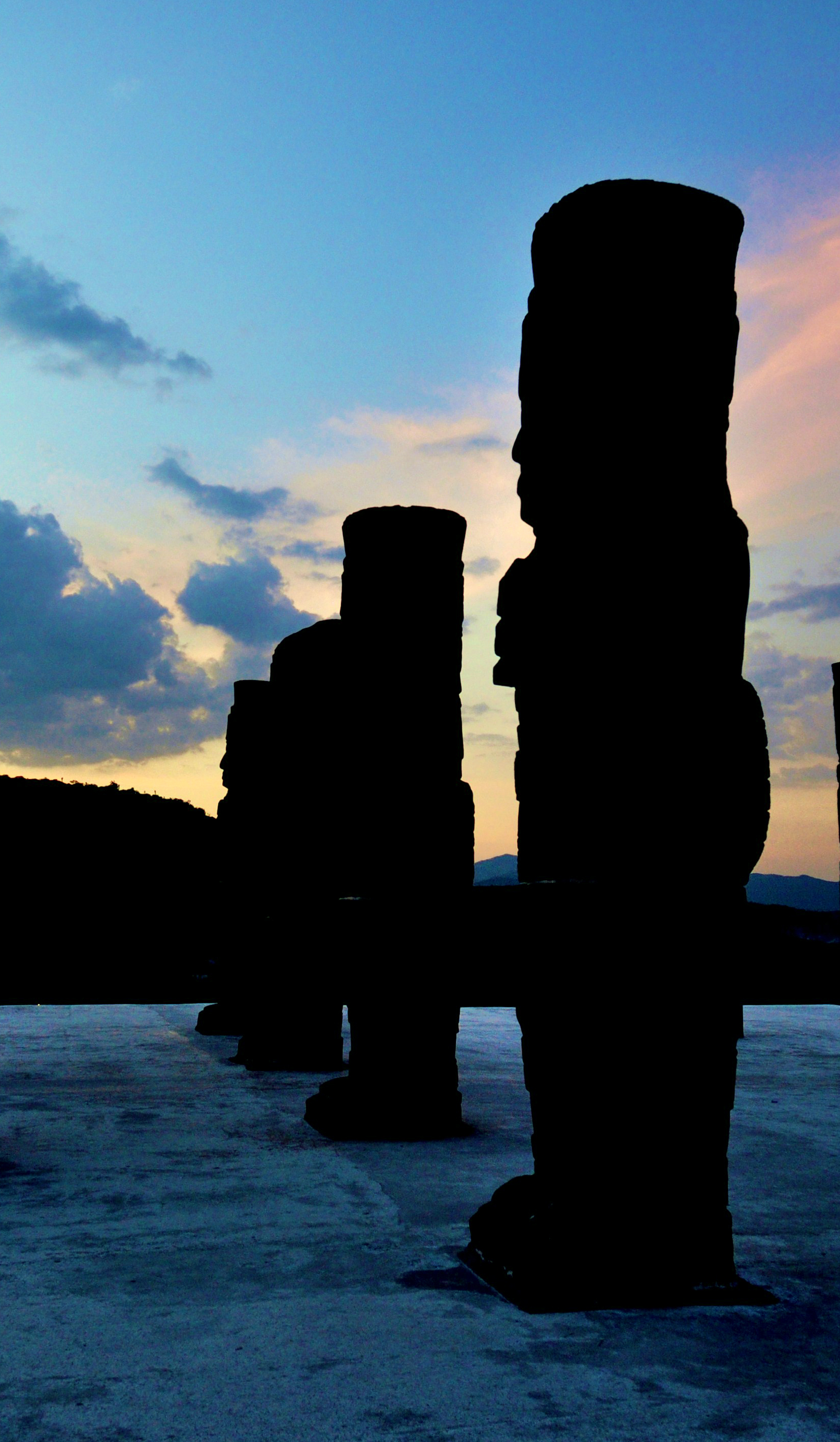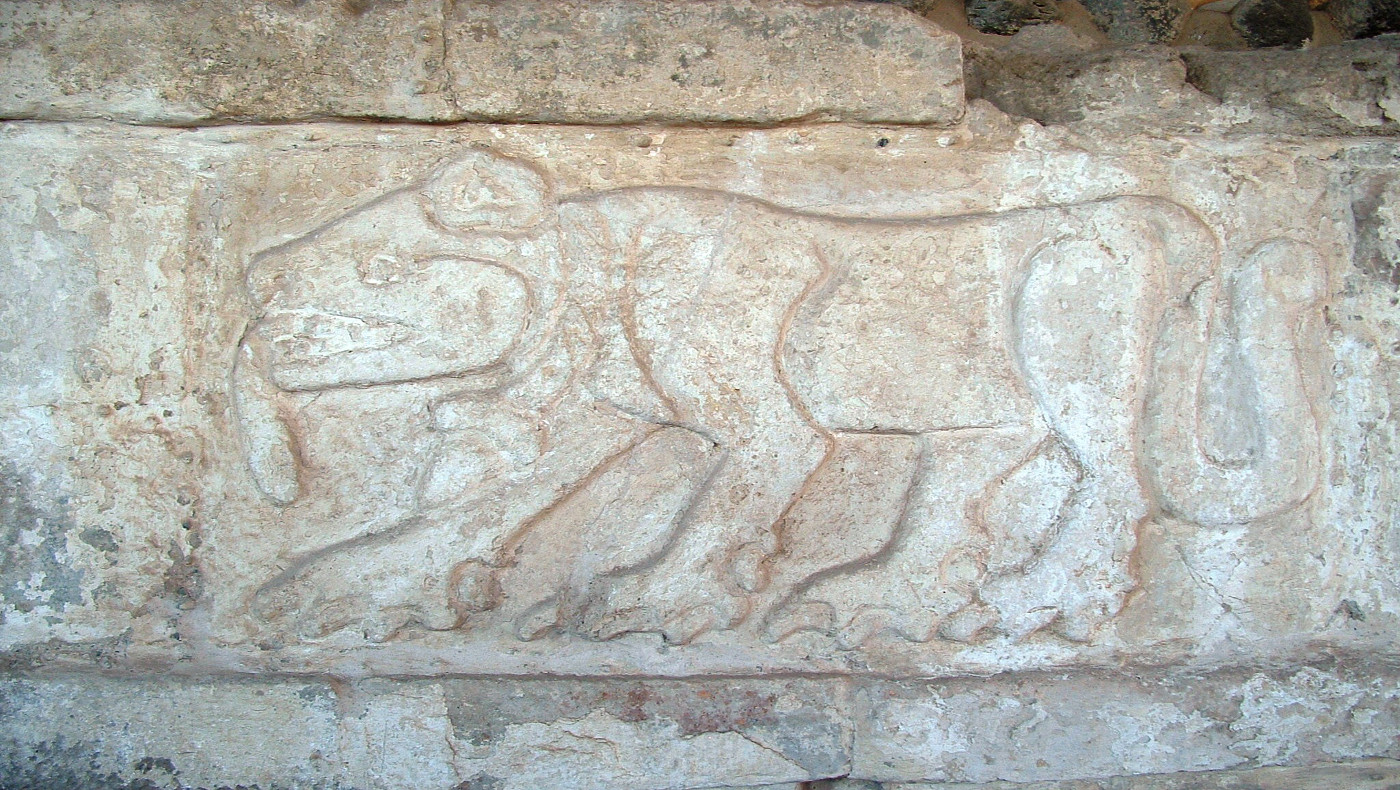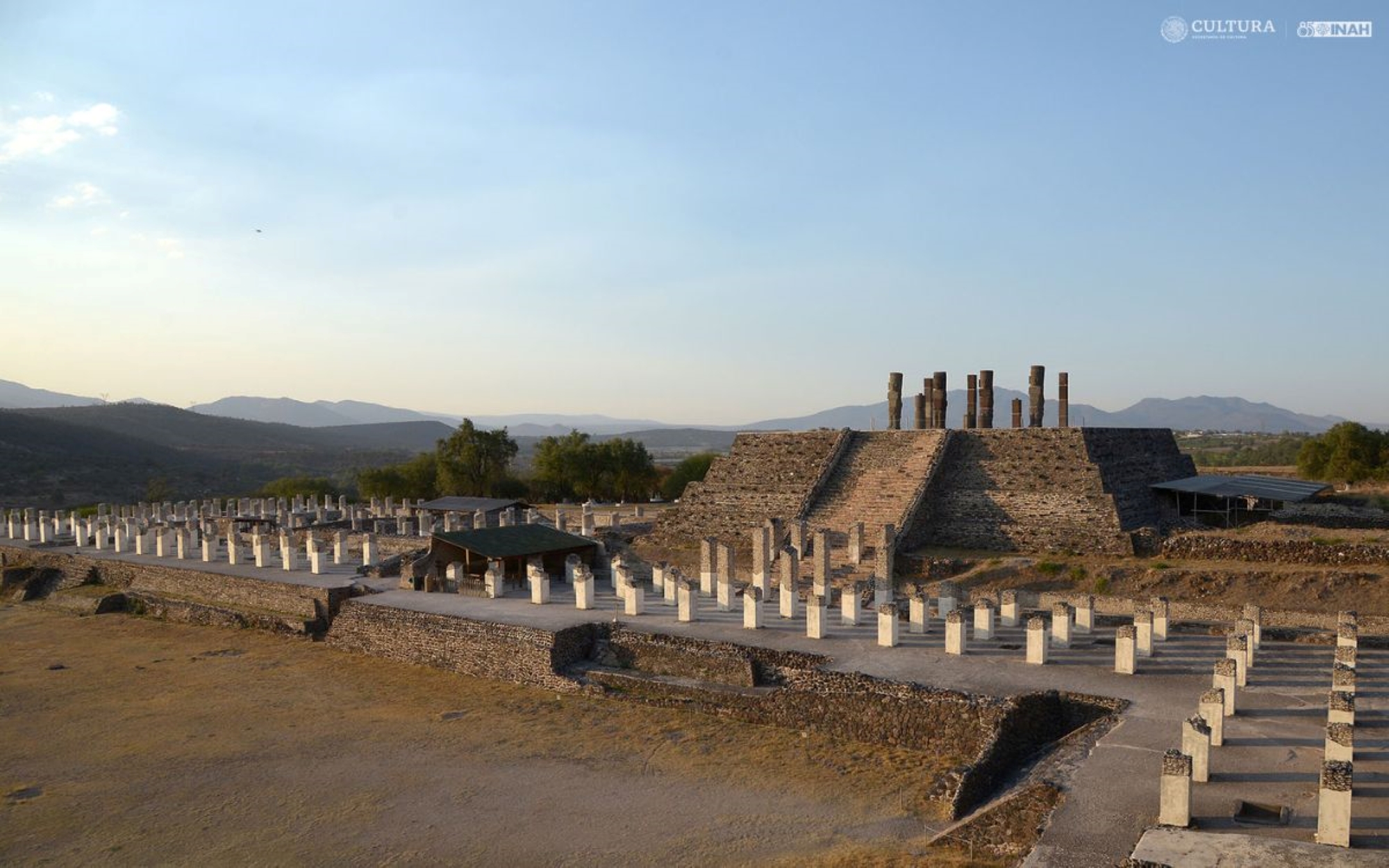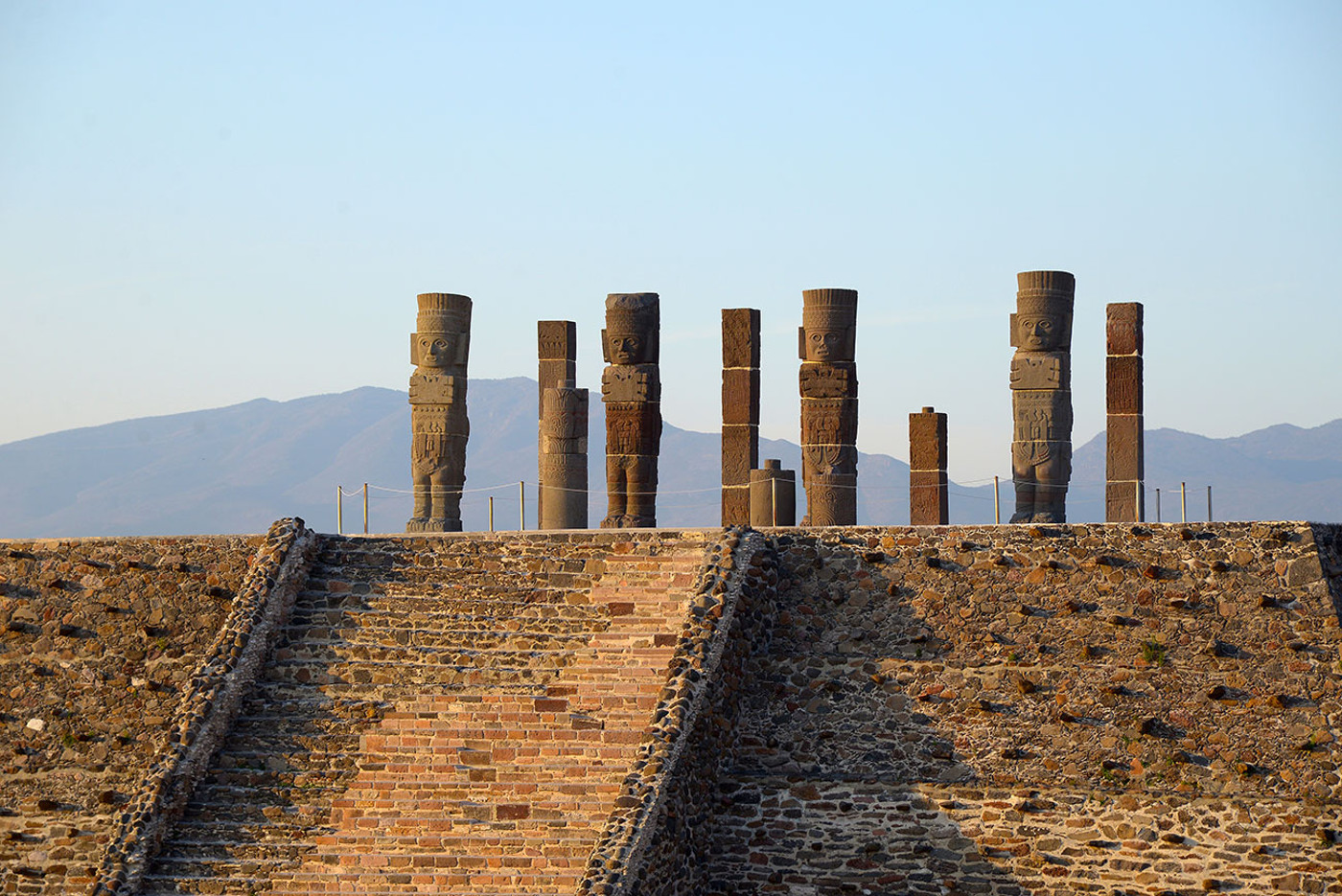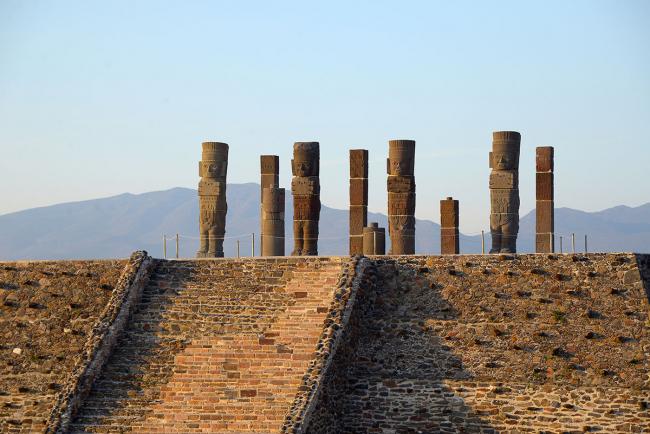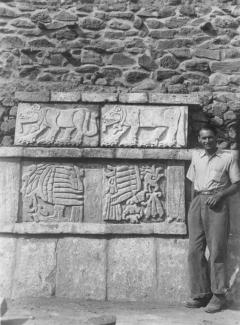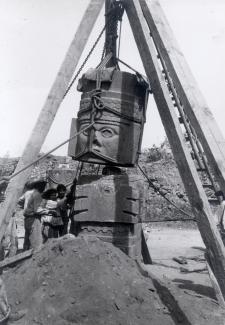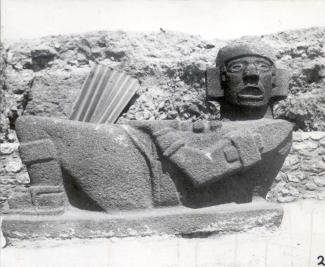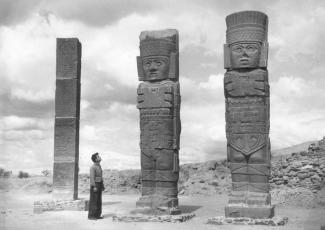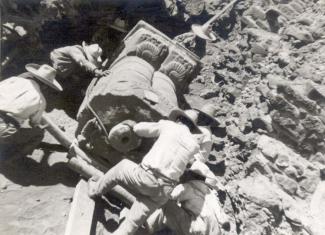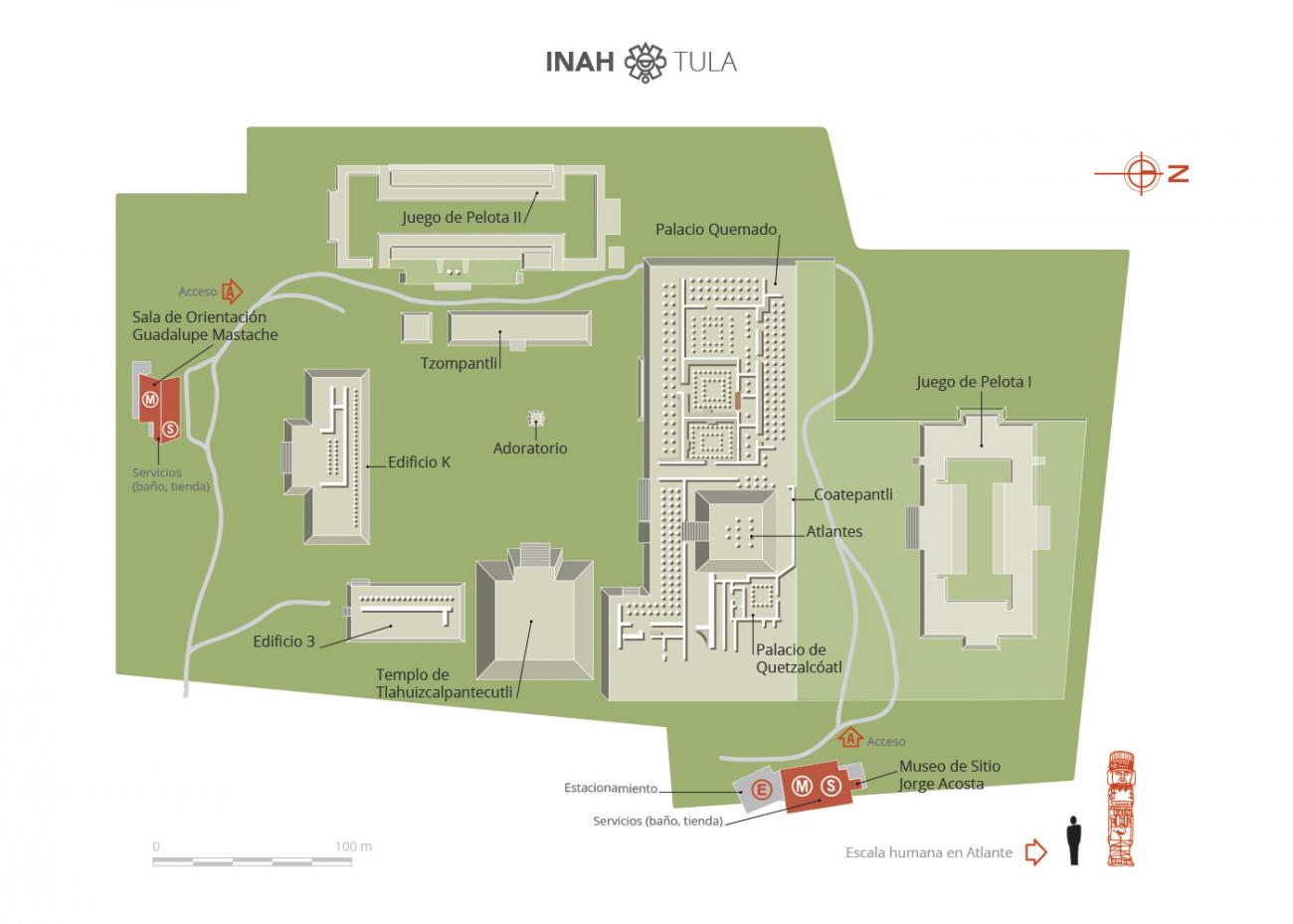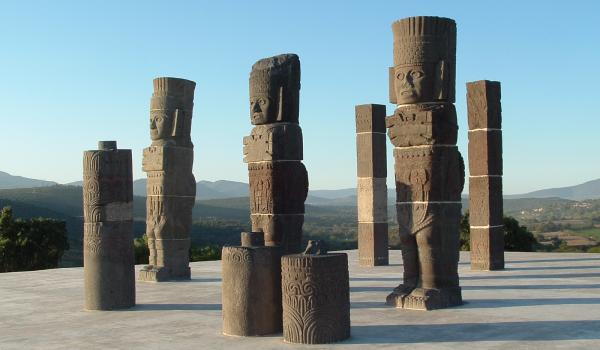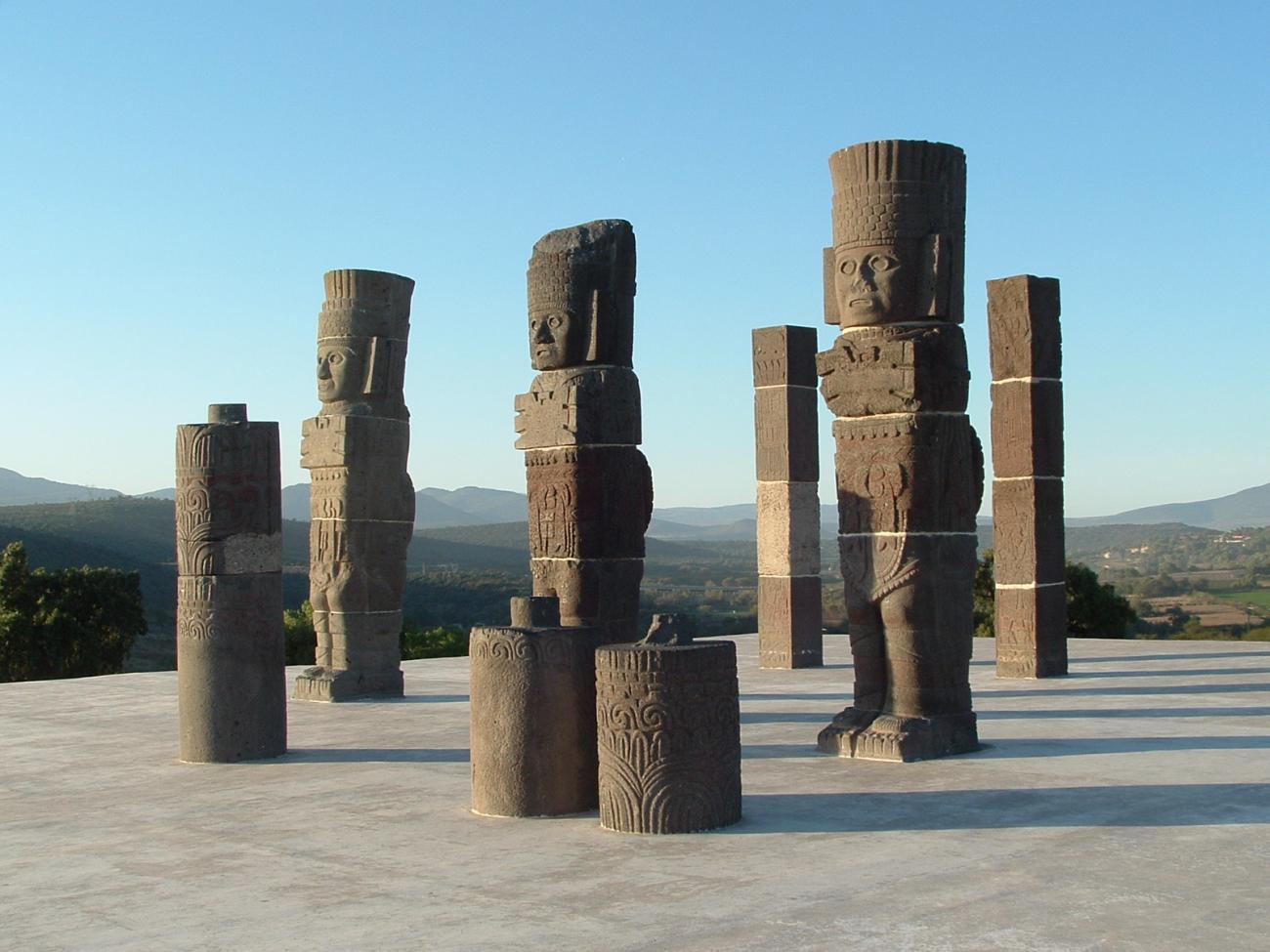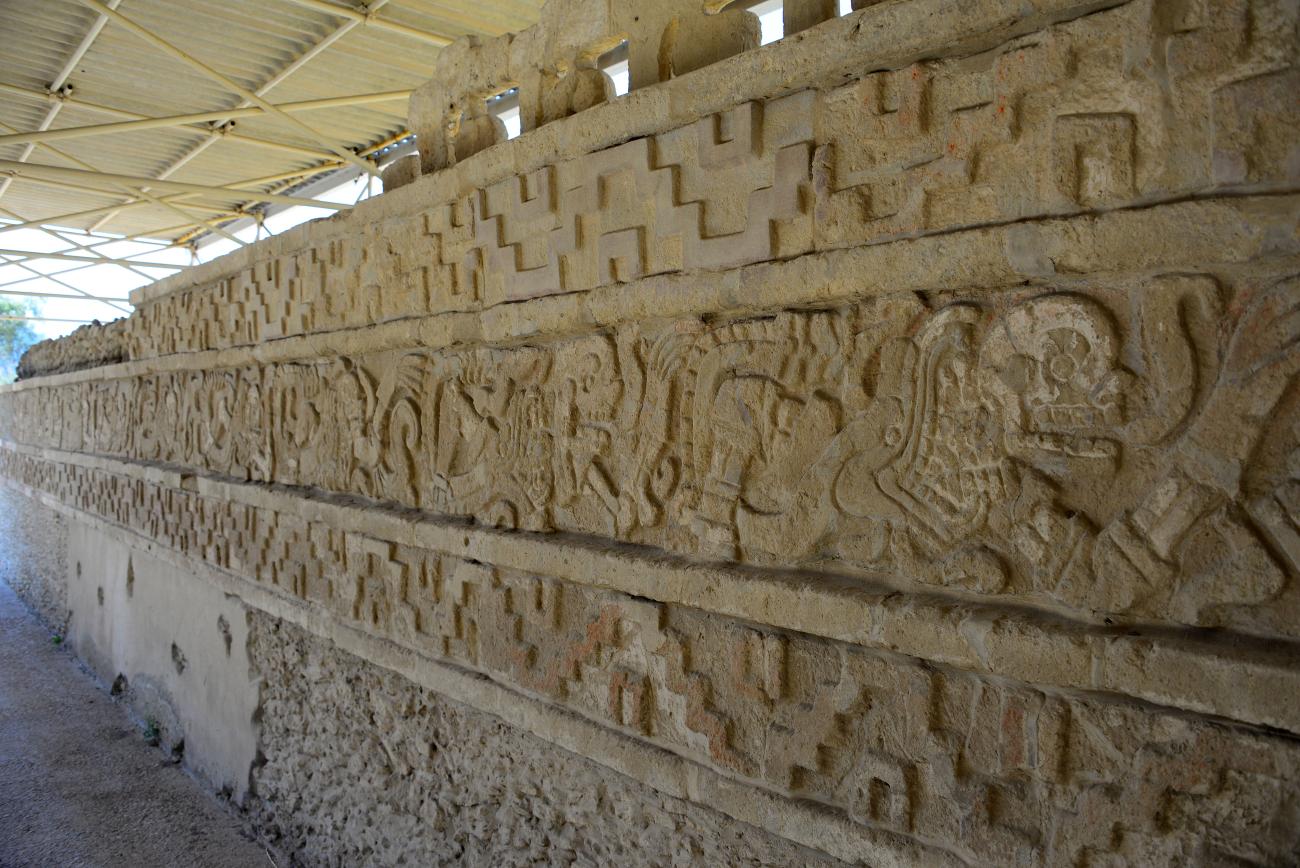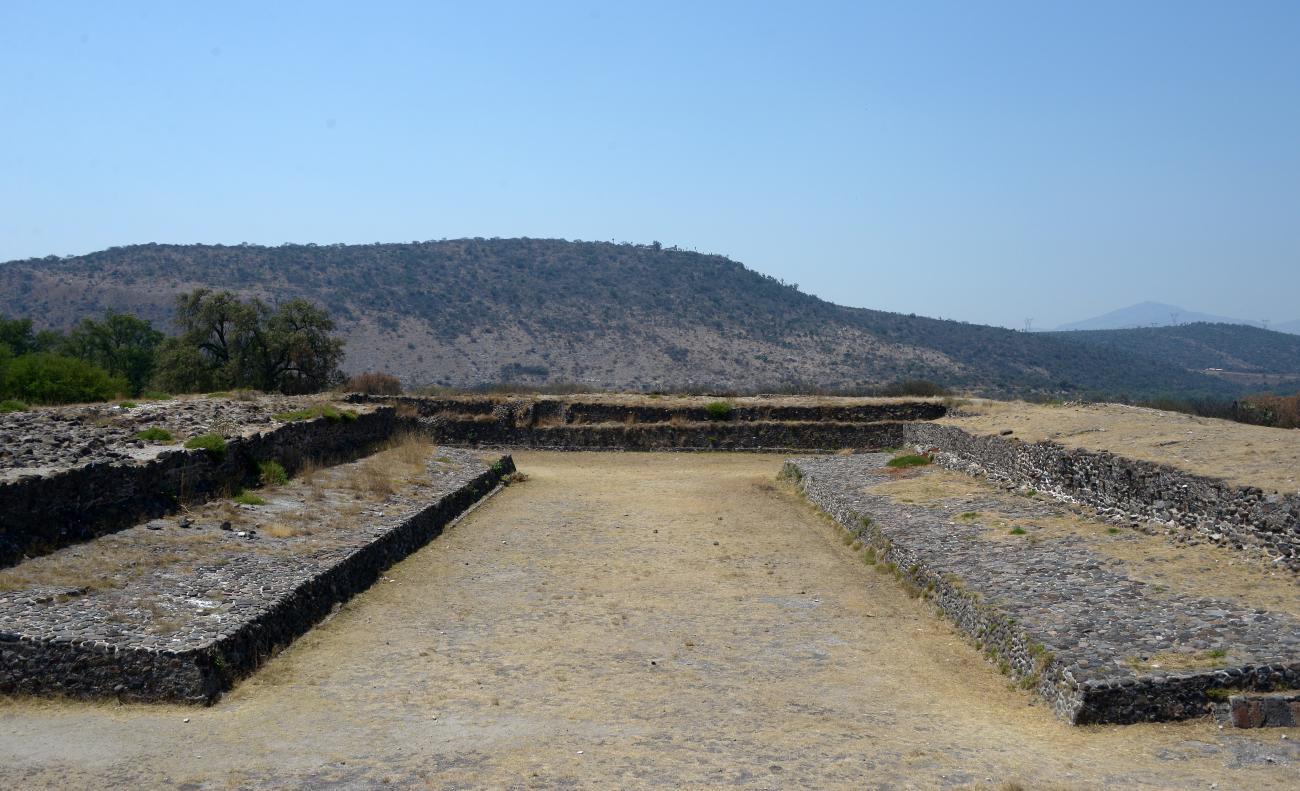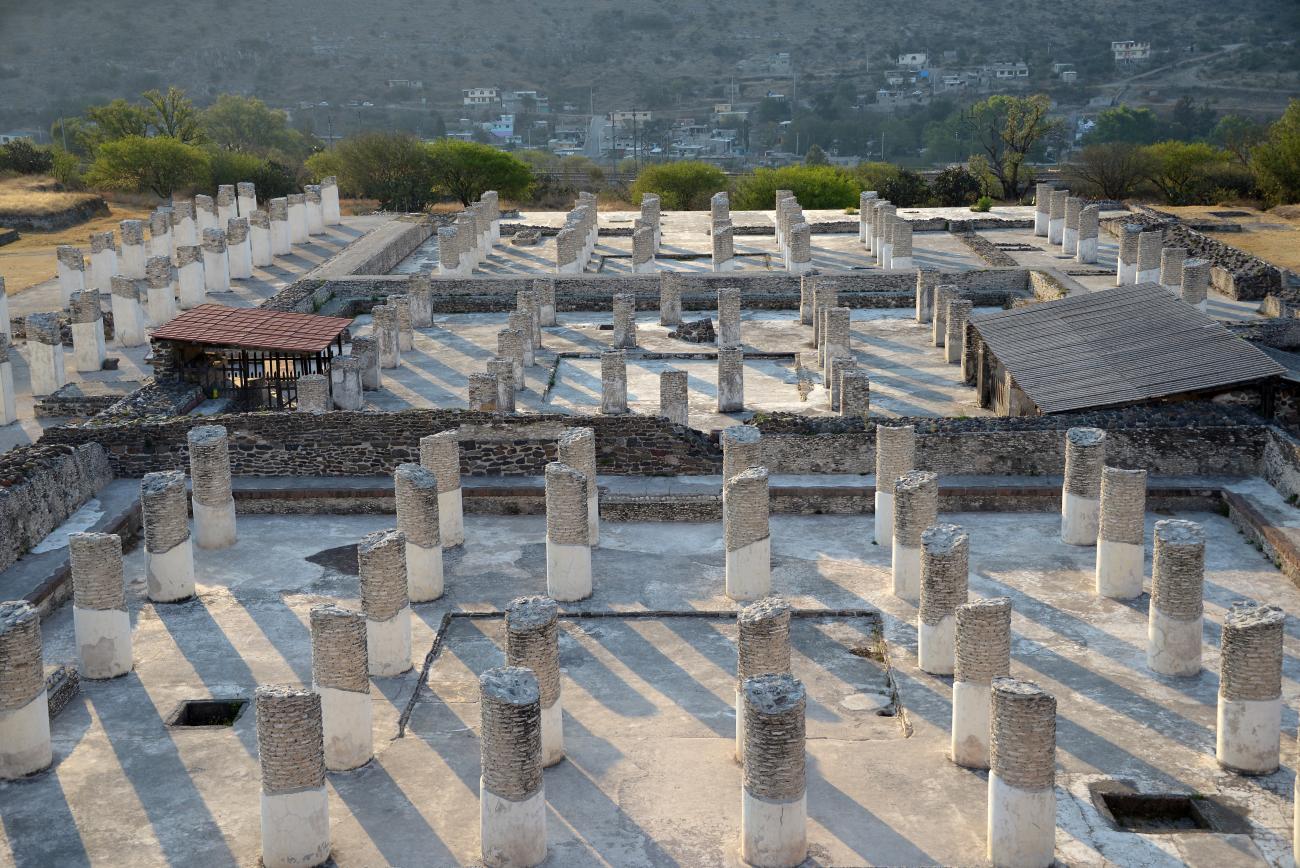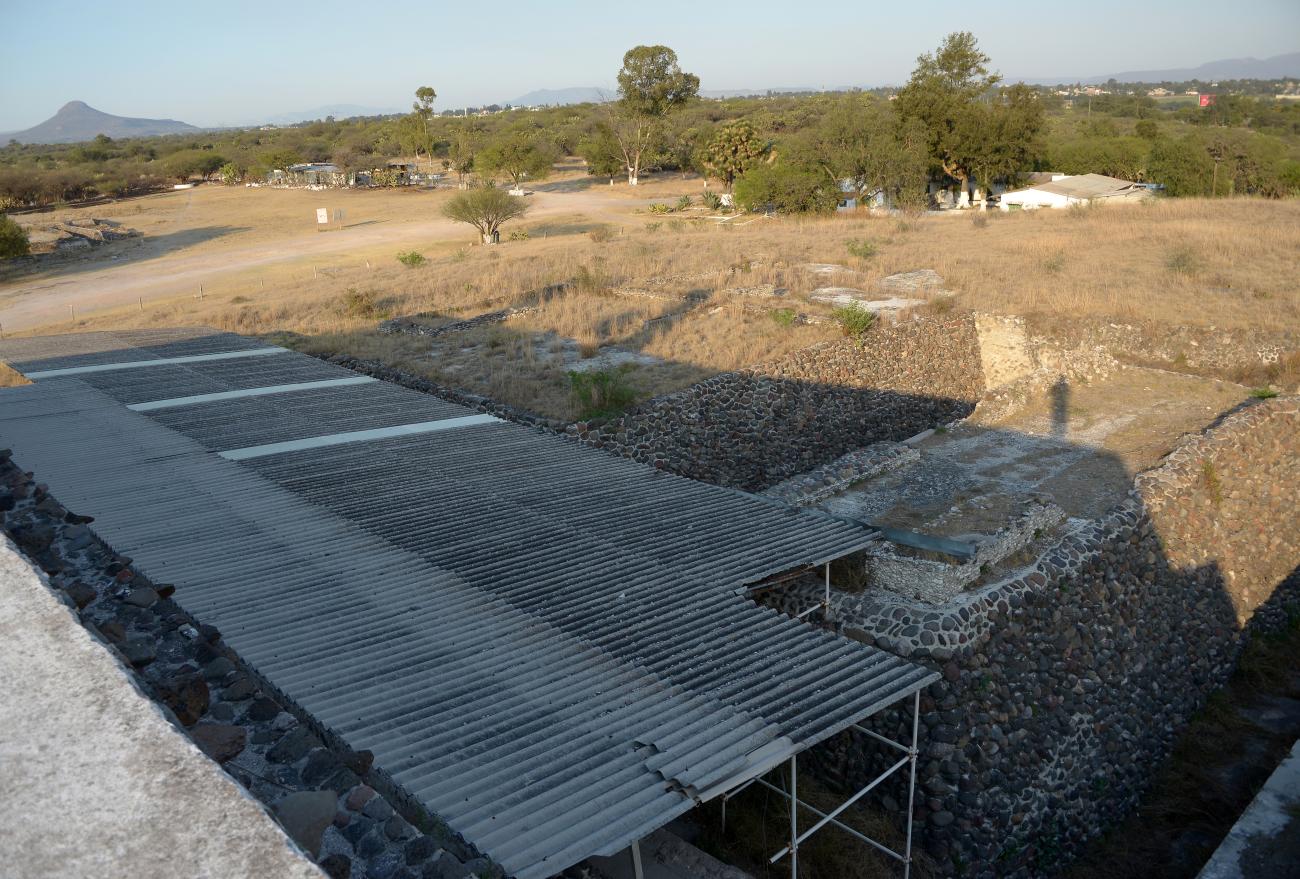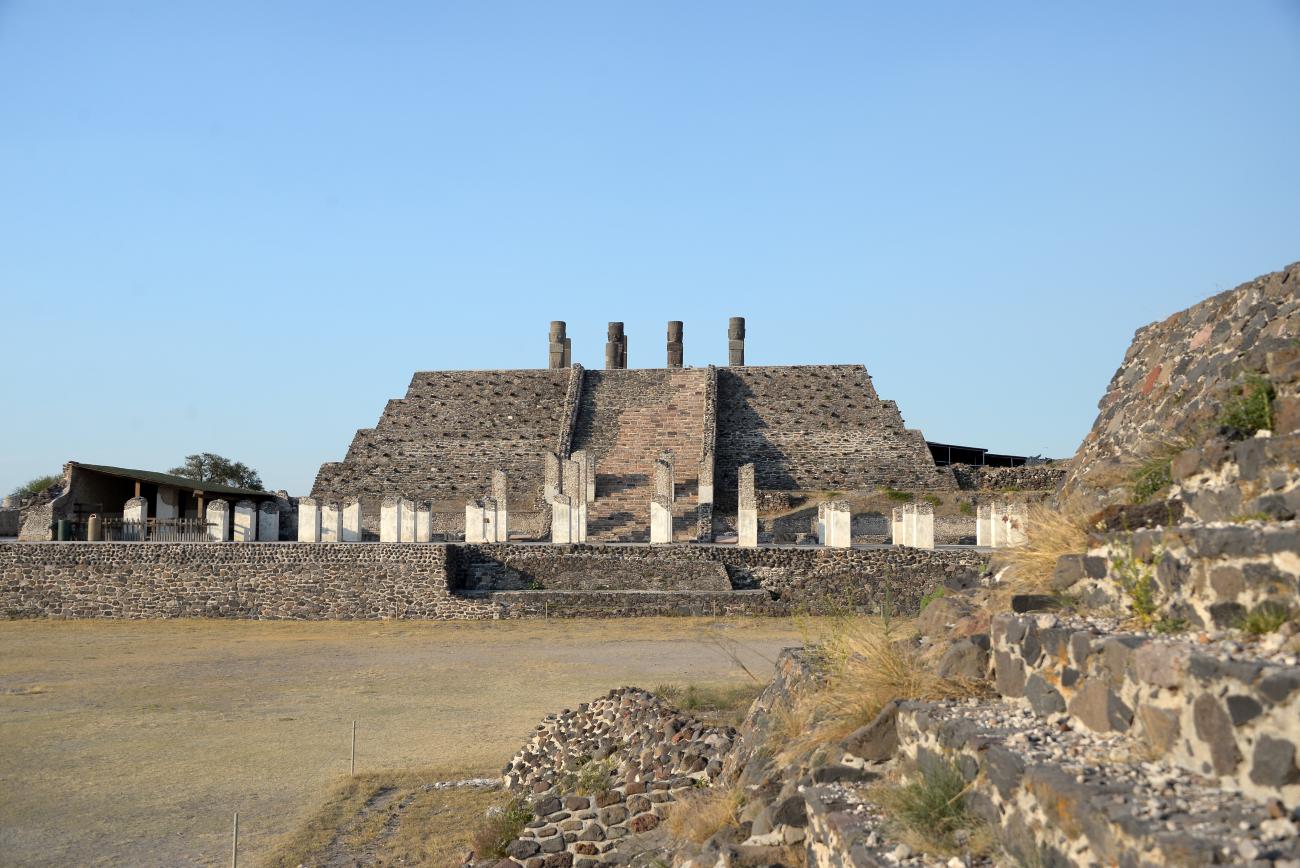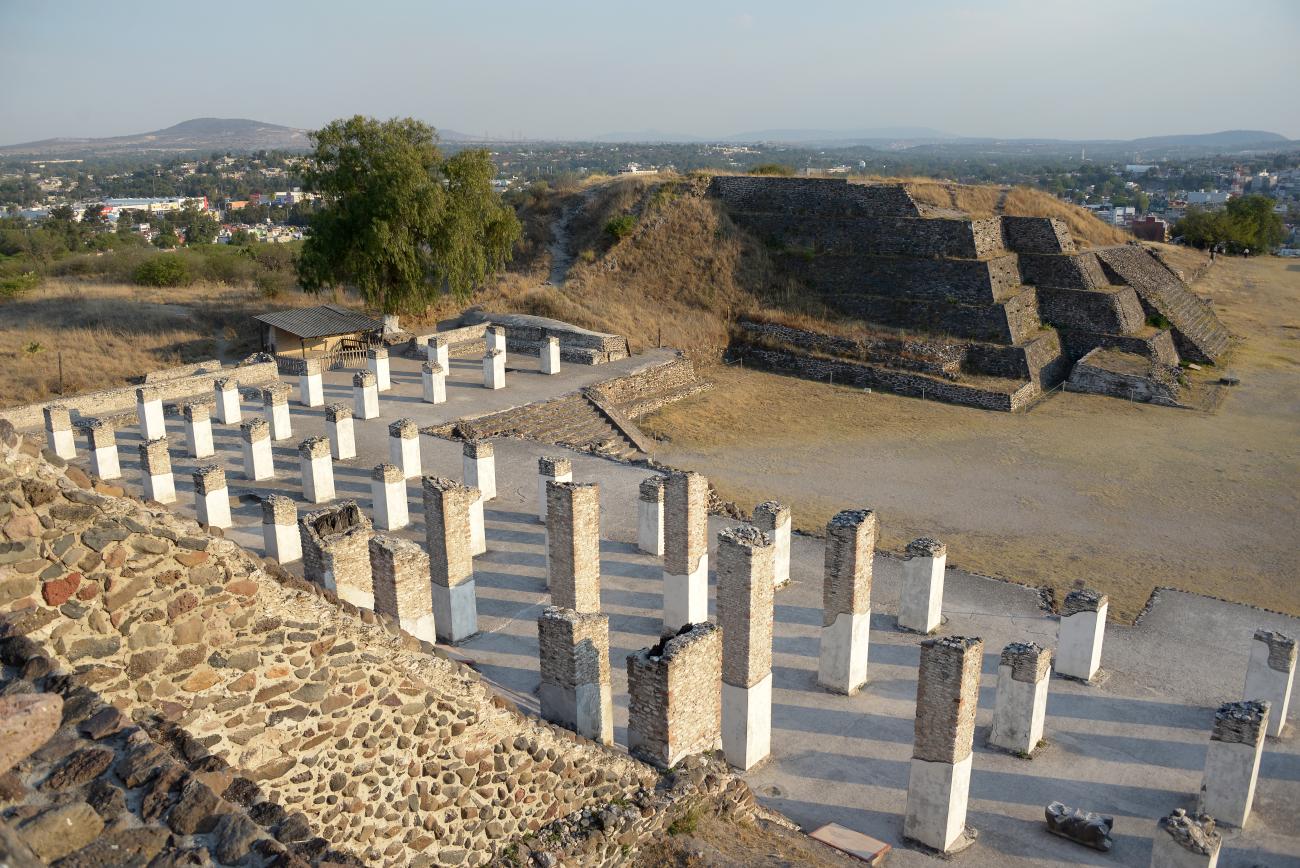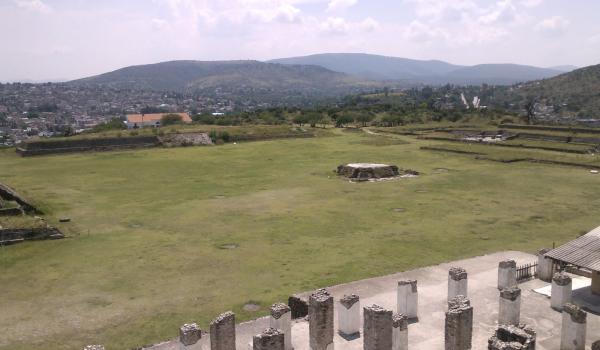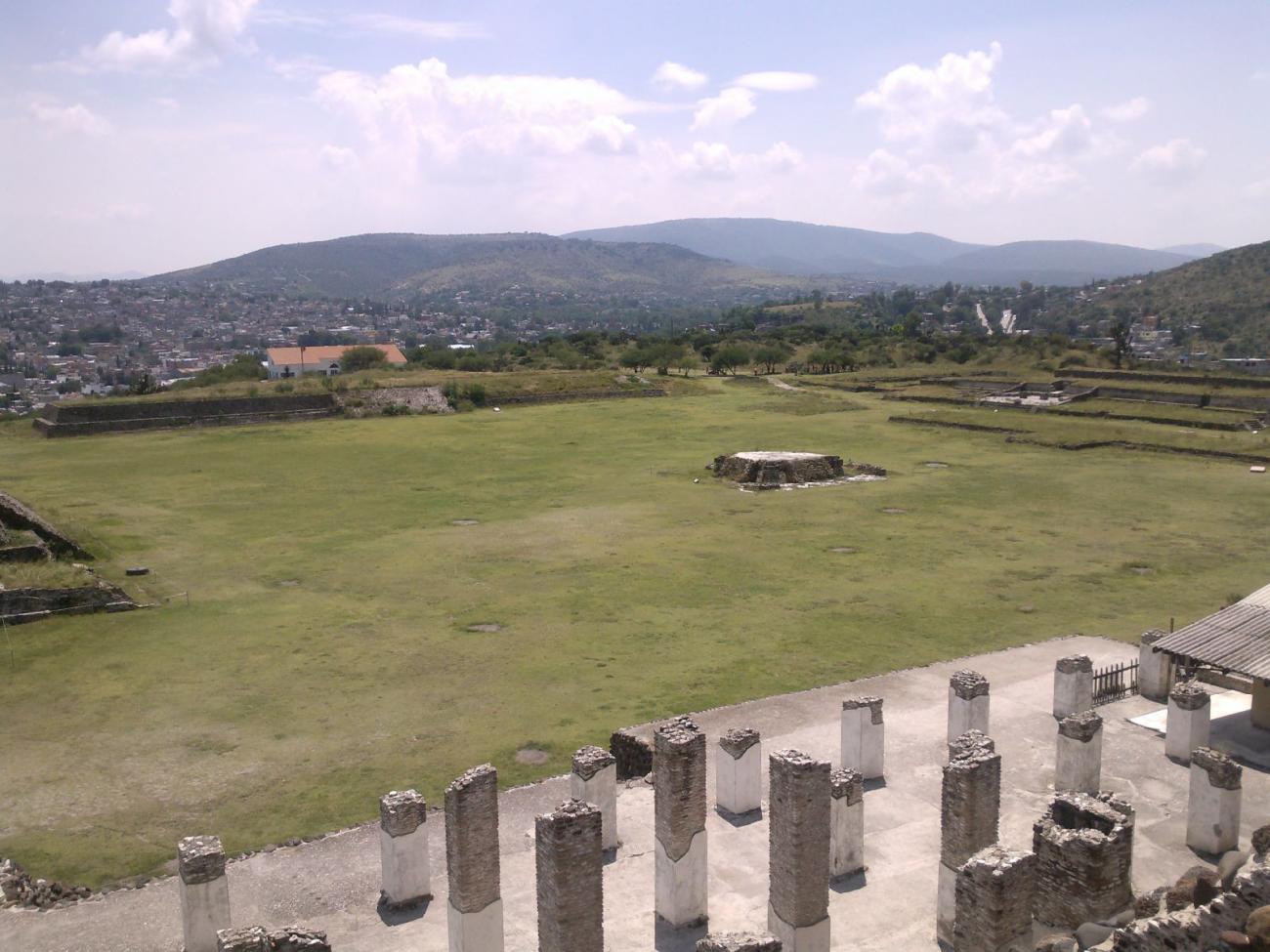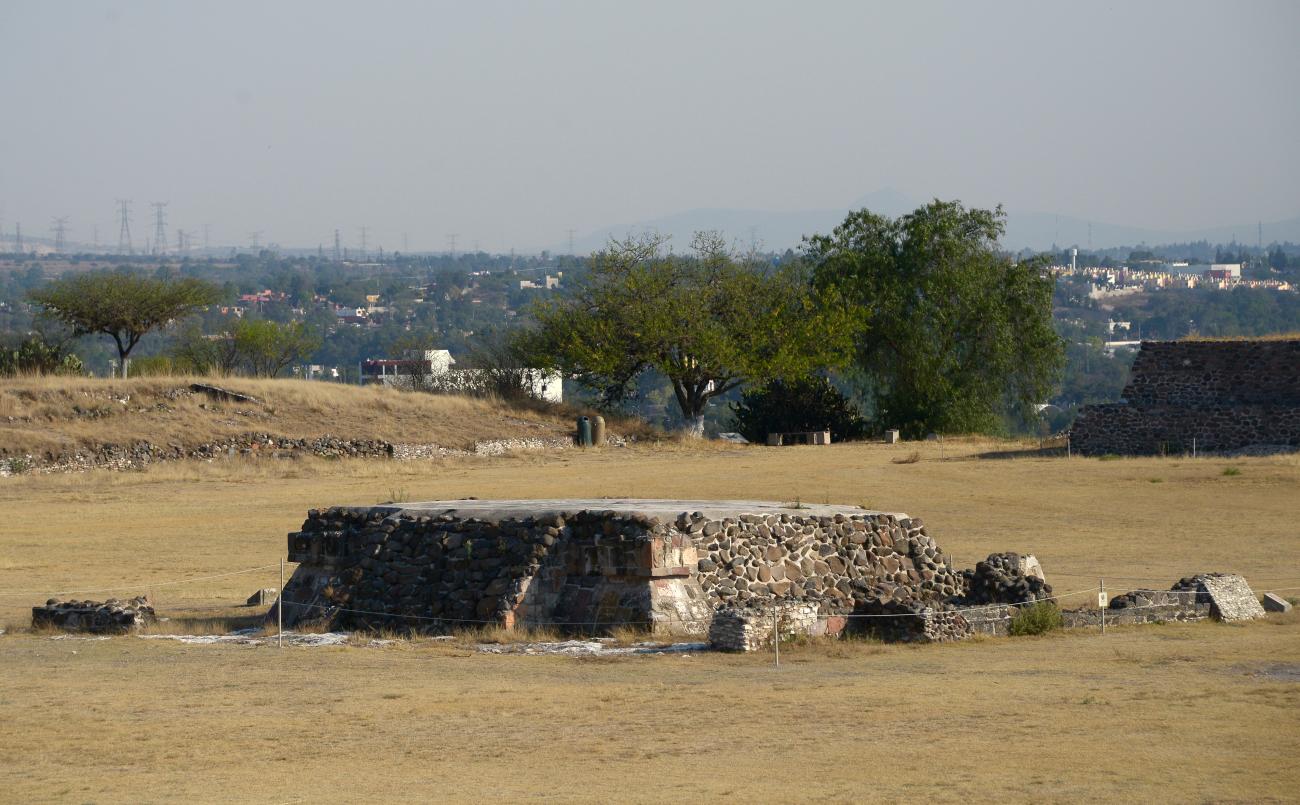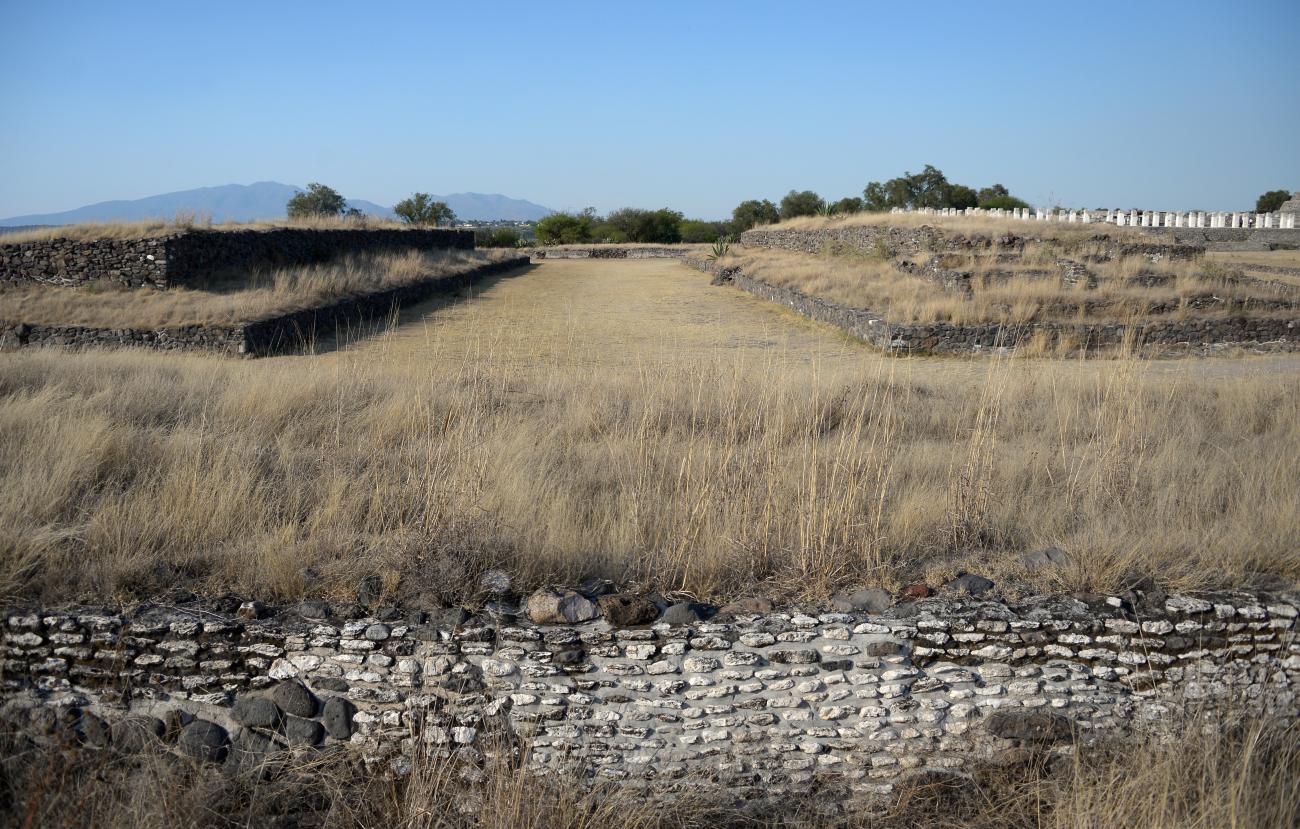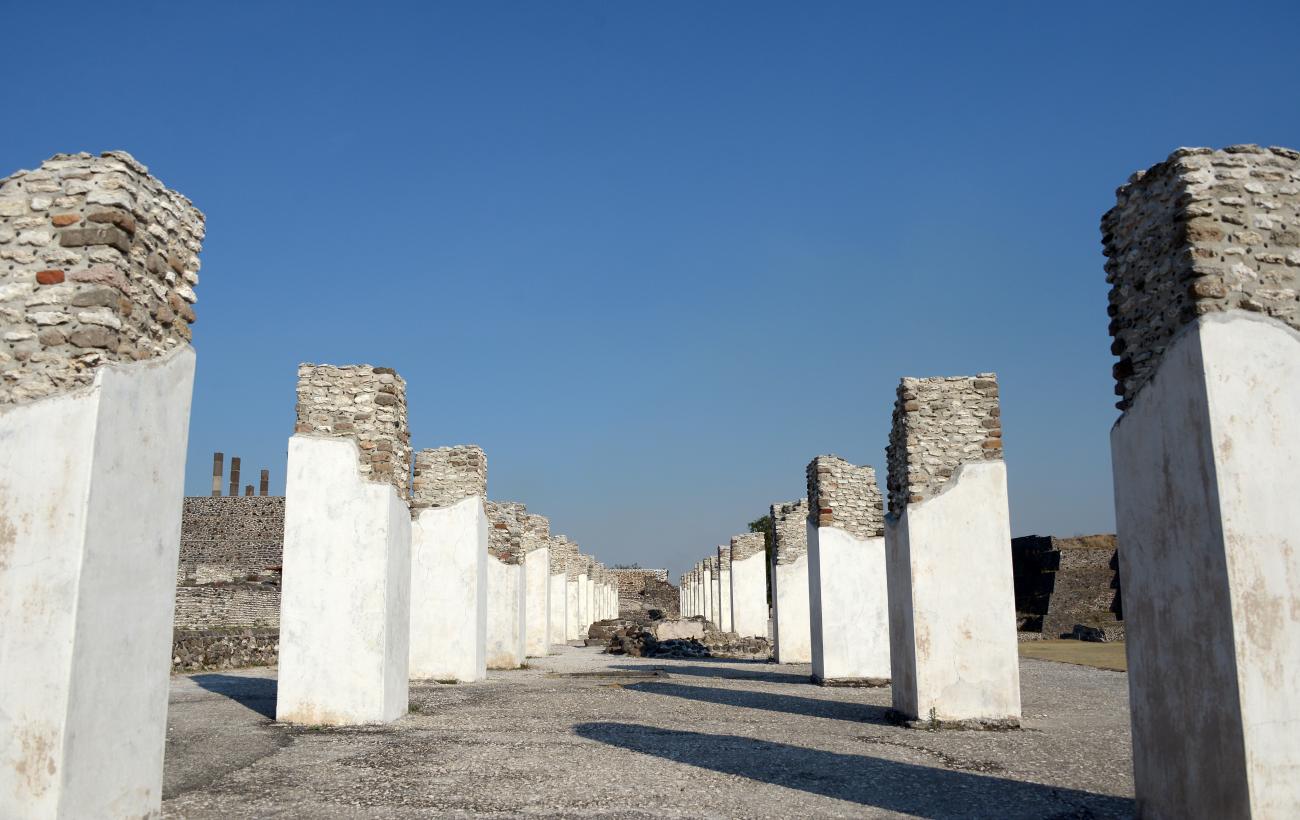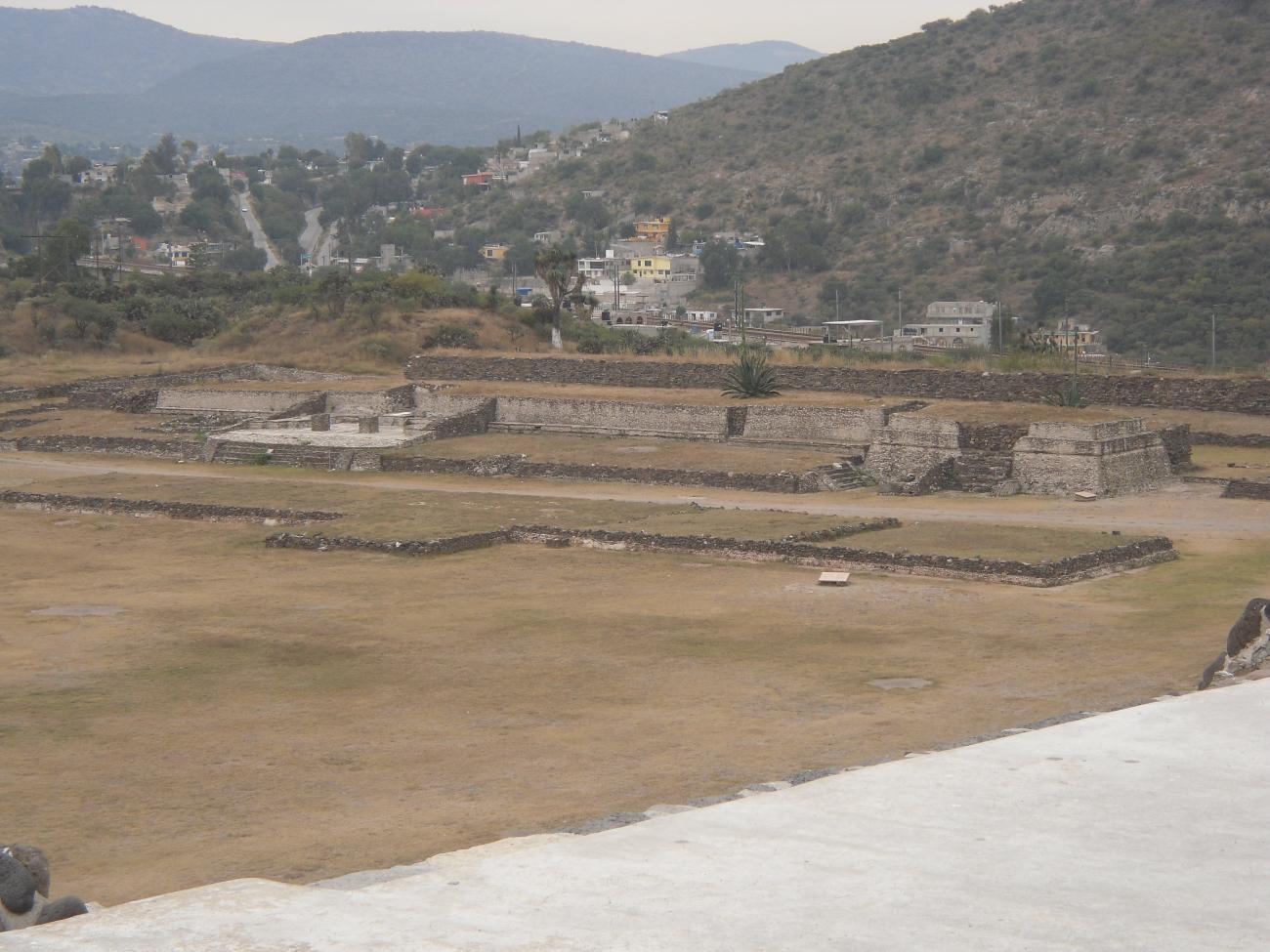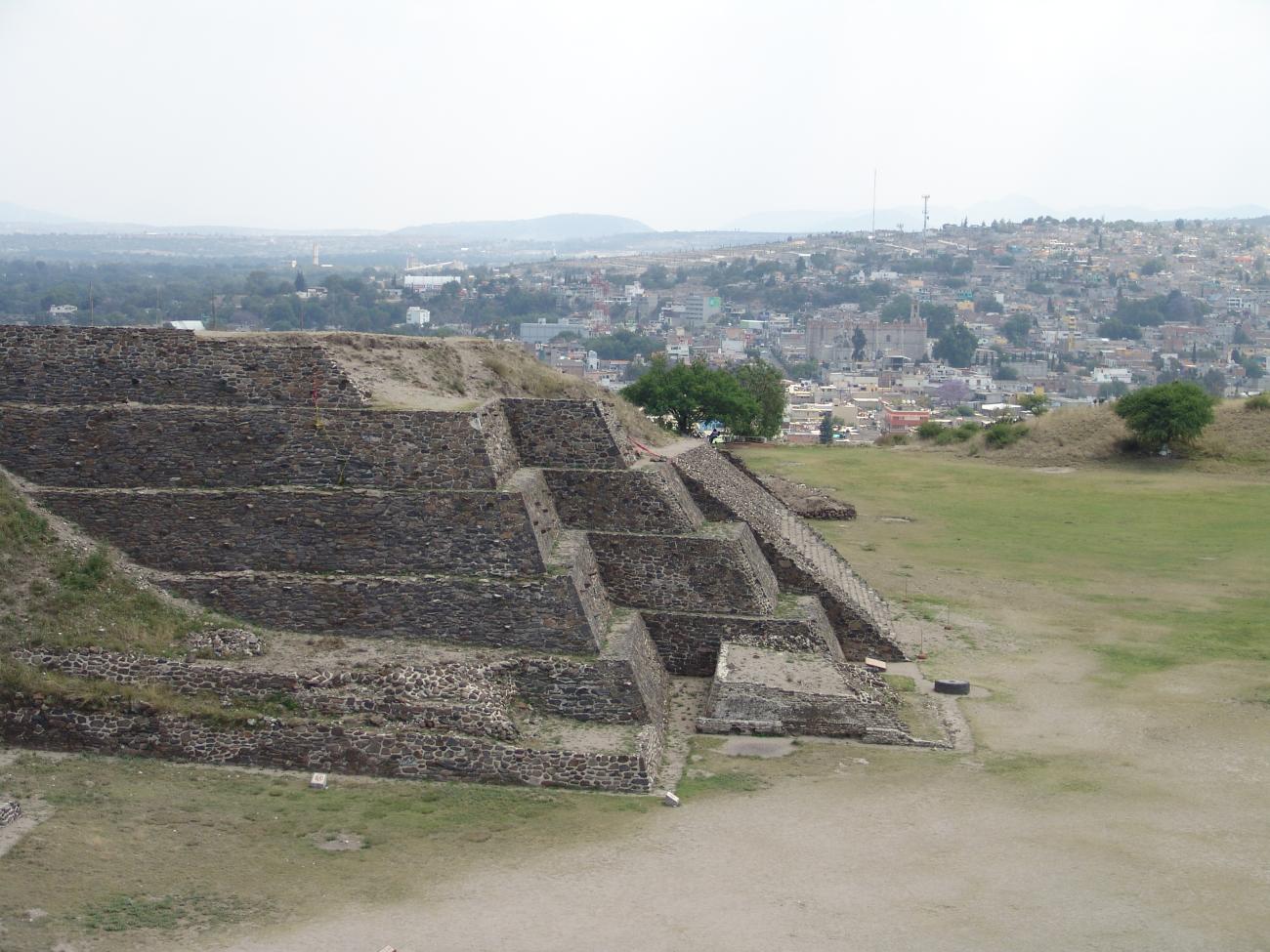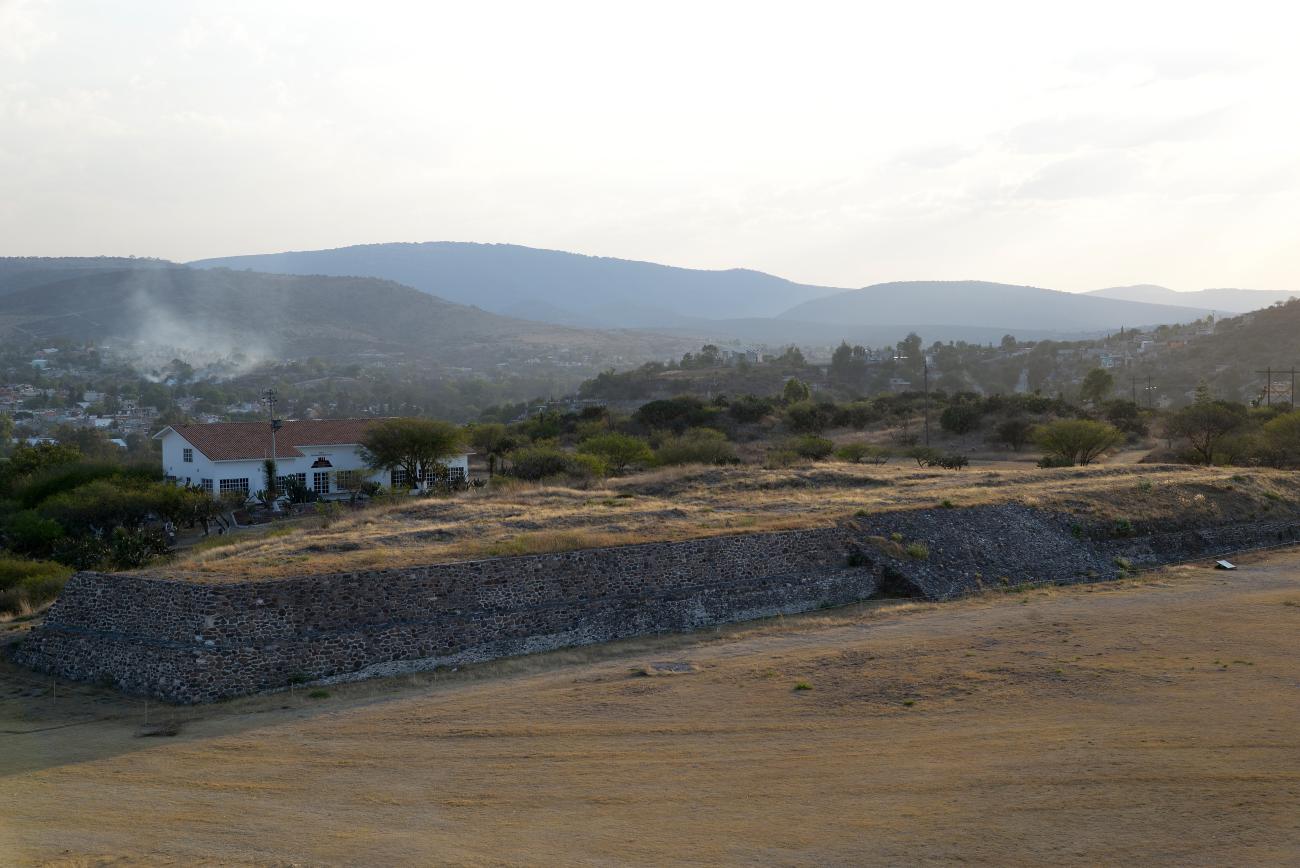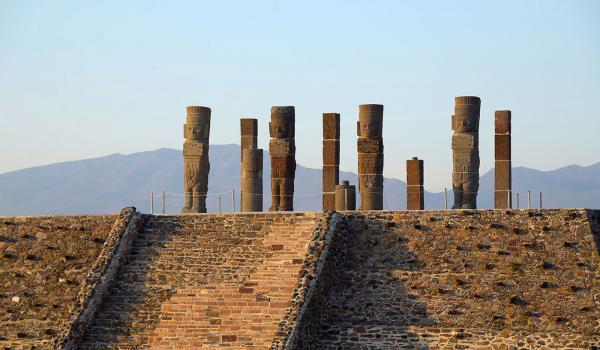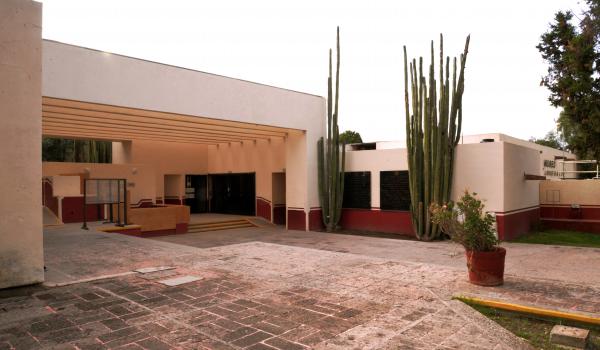From numerous studies on the internal structure and extent of this imposing city, we know that the original settlement dates back to the seventh century AD in the site known as Tula Chico, an area encompassing approximately 1.2 square miles lying along the route of the Tula River. The site now known as Tula Grande emerged subsequently, in the tenth century; the layout and orientation of the main buildings in the city were defined as the result of observation of the movements of the stars.
Tula’s inhabitants lived in neighborhoods where temples and palaces provided ideological, economic and political reference points. The housing, both for the ruling class and the common citizens, formed the central nucleus of the urban settlements’ layout. The building complexes were constructed on leveled terrain, cobblestone plazas and streets; terraced platforms provided the base for various structures including temples, ballcourts, palaces, “tzompantlis” (walls of skulls), and altars.
The sculptures of atlantes—likely to originally have been roof supports—are sculpted as warriors wearing butterfly-shaped chest plates, átlatl or dart throwers, obsidian knives, and headdresses. Pilasters are decorated with priests and important figures, as well as snake-shaped columns, which were used as entrances for the lodgings. Building B contains a decoration with reliefs on the wall known as the Coatepantli ("Wall of Snakes"), also found in the Palacio Quemado ("Burned Palace"), which together with the Vestibule structure constitute two of the spaces created by columns, pilasters, and benches.
Archeological explorations at the site began in 1940, led by archeologist Jorge Ruffiere Acosta, whose team worked for 13 seasons before they eventually completed their work in 1960. Later projects carried out by the universities of Tulane and Columbia were coordinated by the INAH’s regional office in Hidalgo, until Guadalupe Mastache and Robert Cobean took over this work in the 1990s.
This metropolis—which stretched over more than 6 square miles—was inhabited for over four centuries and, alongside Teotihuacan and Tenochtitlan, was one of central Mexico’s most important urban centers. Some believe that, by around the year 1000 AD, it had become the capital of Mesoamerica’s entire central highland region. Its sphere of influence expanded to include most of central Mexico, as well as the Bajío, Gulf Coast, and the Yucatán; it probably also had an effect on Western Mexico’s regions and the Soconusco on the Pacific coast of modern-day Chiapas, on the border with Guatemala.
The Toltecs are the first pre-Hispanic people in the center of ancient Mexico about whom we possess information in regard to their history and culture (names of kings, accounts of the origins of Tula, their conquests and decline). A number of different written sources state that Tula was the city of a priest-king called Ce Ácatl Topiltzin, one of Mesoamerica’s most fascinating and heroic characters whose life was a blend of history and legend.
Tula reached its peak between 900 and 1000 AD, when its urban center experienced a transformation and reached its maximum expansion. This indicates that it was a heterogeneous, diversified, and complex society with a class system. Land in the city was divided into public and private spaces, with open areas, administrative and religious buildings, as well as zones for people to gather, share information and trade merchandise; there were also palaces, various housing typologies, and neighborhoods of varying kinds with areas for the manufacture of goods. The reason for Tula’s decline and collapse in the twelfth century remain unclear, but one of the causes may have been over-population and, therefore, the migration of its inhabitants to other cities.






